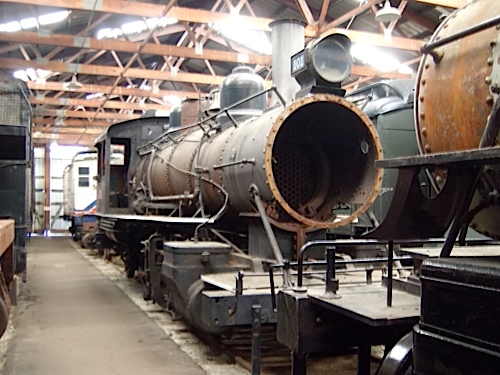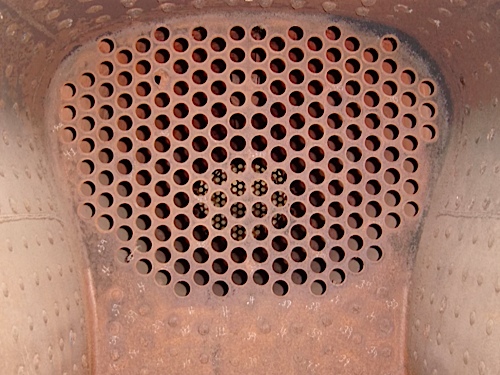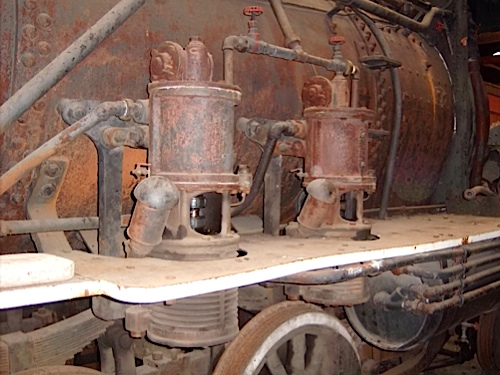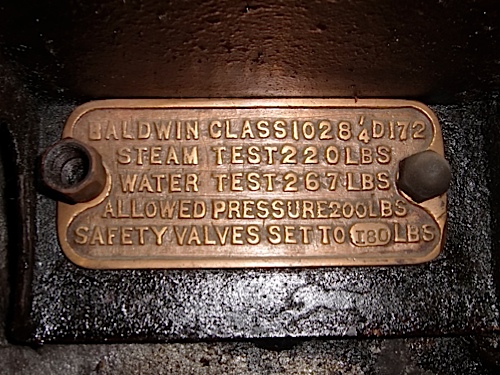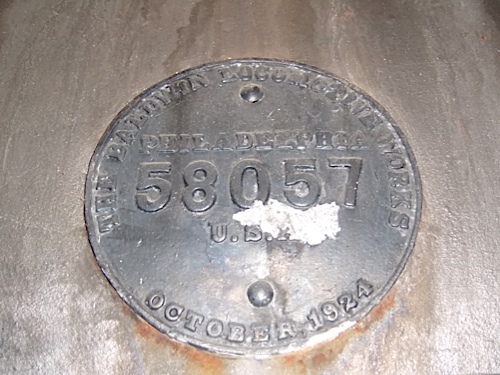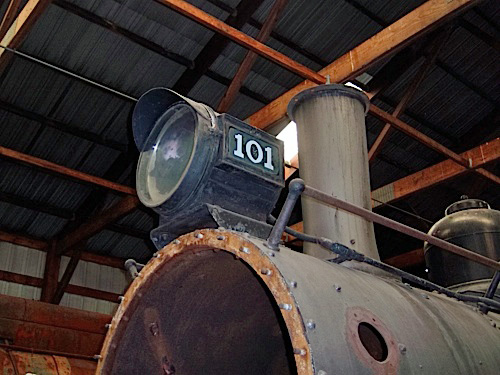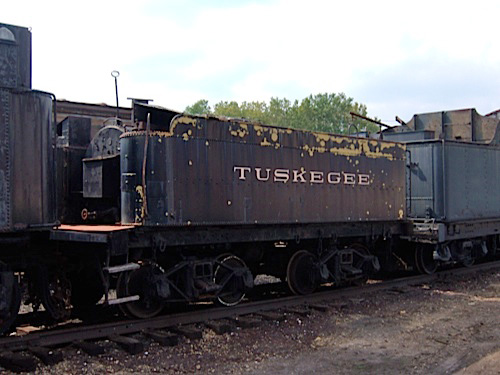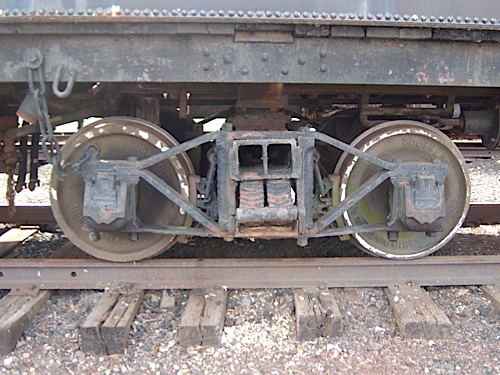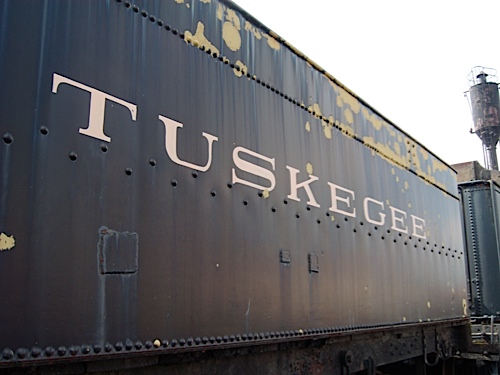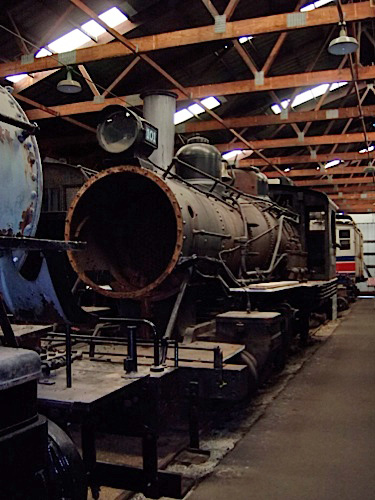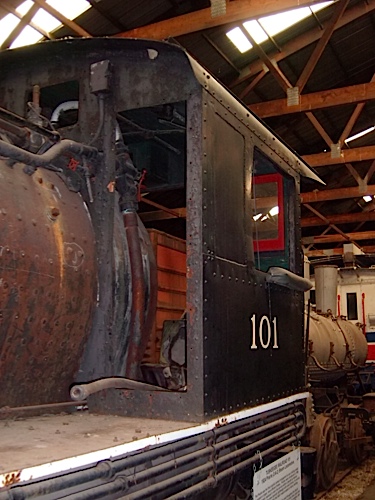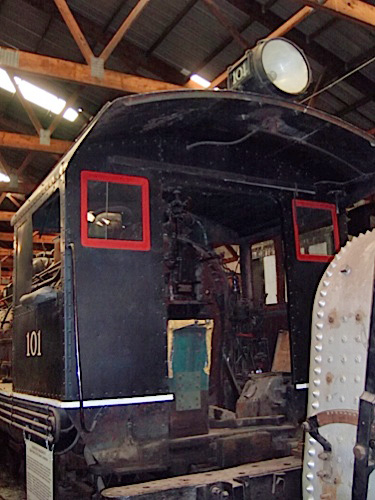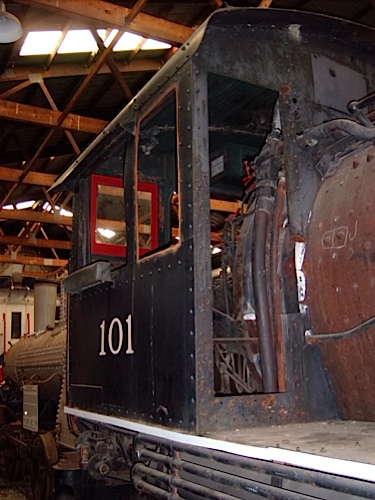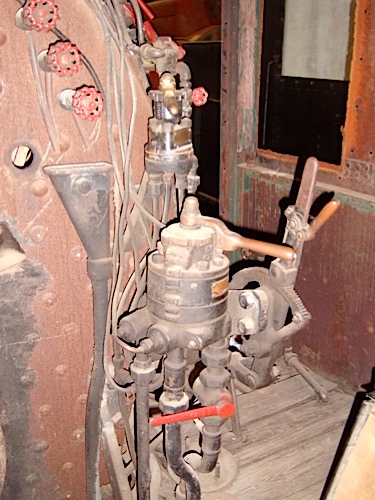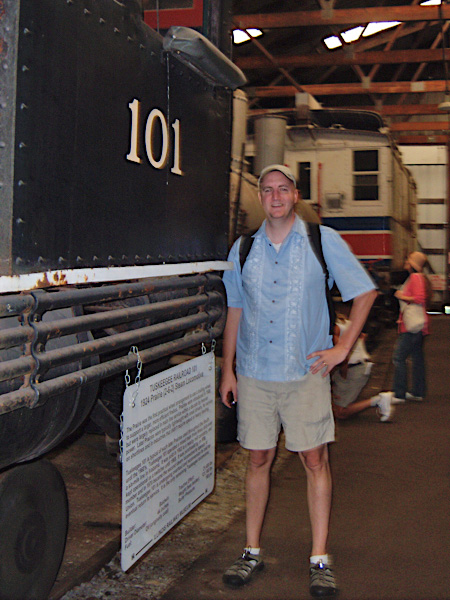
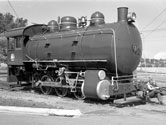




T. R. Miller Mill Company
"The Natural Choice Since 1872"
Located in south Alabama, T. R. Miller Mill Company, Inc. is one of the oldest privately held forest product companies in the milling business. Miller relied on steam and rail almost from the very beginning of operations, but by the 1960s, their facility in Brewton had become a steam railfan stopping point: Handsome and nimble Baldwin #101 worked their mill well past the time most of her southern sisters had been scrapped and replaced with diesel-electric power.
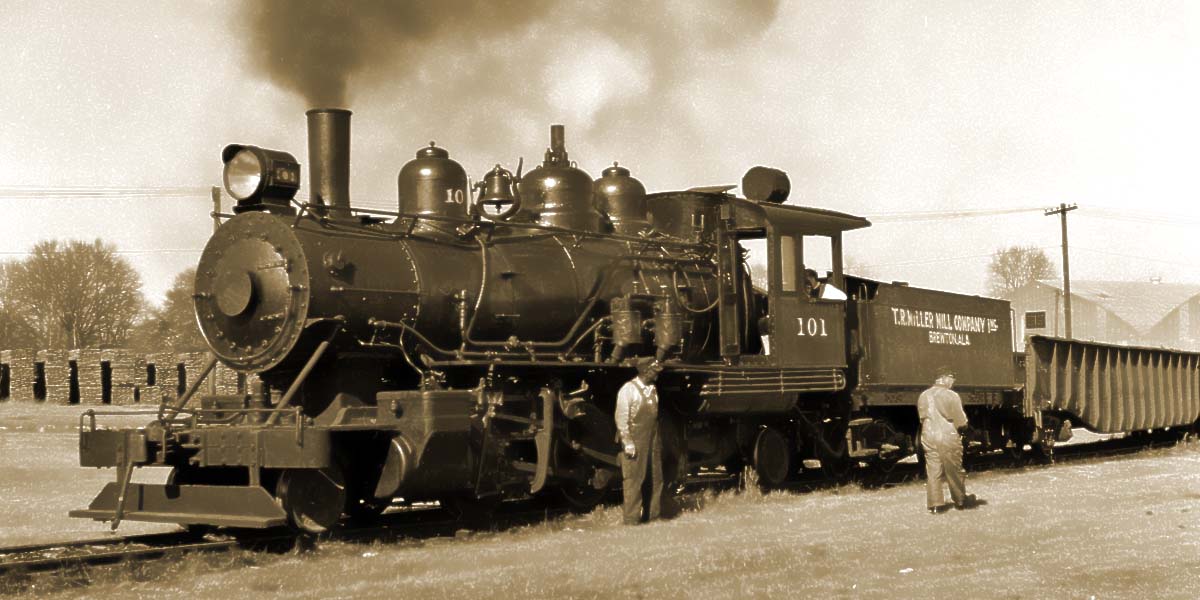
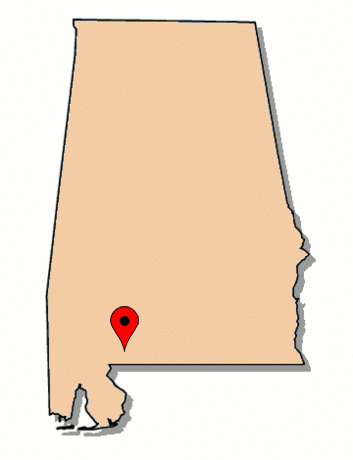 The Miller Mill company owns and operates two adjacent facilities at Brewton, Al, northeast of Mobile and less than 10 miles from the Florida state line.
One plant is a standard lumber mill, taking in felled pine trees and producing various sizes and lengths of finished lumber sold to wood treatment finishers and wholesale distributers. Waste wood is sold for pellet production and electrical generation fuel. The second mill, about a mile to the east of the first, is a telephone pole production and treatment plant. Poles are produced to the specification of utility customers. Although all inbound raw materials and some finished products are shipped via trucks, much of the finished lumber is shipped by rail on center-beam flatcars and many of the poles are shipped via side-post log cars.
The company maintains a short railroad pike through the woods between loading sidings in the two facilities, and interchange is maintained along Joseph Avenue with the CSX Transportation, formerly Louisville & Nashville mainline between Mobile and Montgomery.
The last two steamers to work the property were a handsome "Prairie" and an unusual 2-4-2 "Columbian" tank engine, both of which still survive.
Today the T R Miller Mill Company makes use of a well-worn General Electric center-cab switcher to shuttle empties for loading and assemble outbound carloads.
The Miller Mill company owns and operates two adjacent facilities at Brewton, Al, northeast of Mobile and less than 10 miles from the Florida state line.
One plant is a standard lumber mill, taking in felled pine trees and producing various sizes and lengths of finished lumber sold to wood treatment finishers and wholesale distributers. Waste wood is sold for pellet production and electrical generation fuel. The second mill, about a mile to the east of the first, is a telephone pole production and treatment plant. Poles are produced to the specification of utility customers. Although all inbound raw materials and some finished products are shipped via trucks, much of the finished lumber is shipped by rail on center-beam flatcars and many of the poles are shipped via side-post log cars.
The company maintains a short railroad pike through the woods between loading sidings in the two facilities, and interchange is maintained along Joseph Avenue with the CSX Transportation, formerly Louisville & Nashville mainline between Mobile and Montgomery.
The last two steamers to work the property were a handsome "Prairie" and an unusual 2-4-2 "Columbian" tank engine, both of which still survive.
Today the T R Miller Mill Company makes use of a well-worn General Electric center-cab switcher to shuttle empties for loading and assemble outbound carloads.

 Located in Brewton, Alabama, T. R. Miller Mill Company, Inc. is one of the oldest, privately held, forest product companies in business today. Built in 1848, the original mill was one of the first permanent sawmills in the South. Little is known of the original mill except that it was a small water-driven mill, but the choice of location still commands admiration. Not only did Cedar Creek power the mill, it also transported logs from the vast pine forest along its upper reaches and floated the sawn timbers to Pensacola, Florida for export.
Located in Brewton, Alabama, T. R. Miller Mill Company, Inc. is one of the oldest, privately held, forest product companies in business today. Built in 1848, the original mill was one of the first permanent sawmills in the South. Little is known of the original mill except that it was a small water-driven mill, but the choice of location still commands admiration. Not only did Cedar Creek power the mill, it also transported logs from the vast pine forest along its upper reaches and floated the sawn timbers to Pensacola, Florida for export.
In 1872, ownership changed and the mill operation was incorporated as T. R. Miller Mill Company. This sawmill has operated continuously since 1872, and today is one of the 150 largest sawmills in the U. S. Since 1903, T. R. Miller has manufactured various specialty pine products, and that continues today with an array of pine flooring, siding, and pattern products, as well as a selection of 4 x 8 lattice panels. In 1927, the treated pole and piling division was added, and is now one of the 10 largest producers of poles in the U. S.
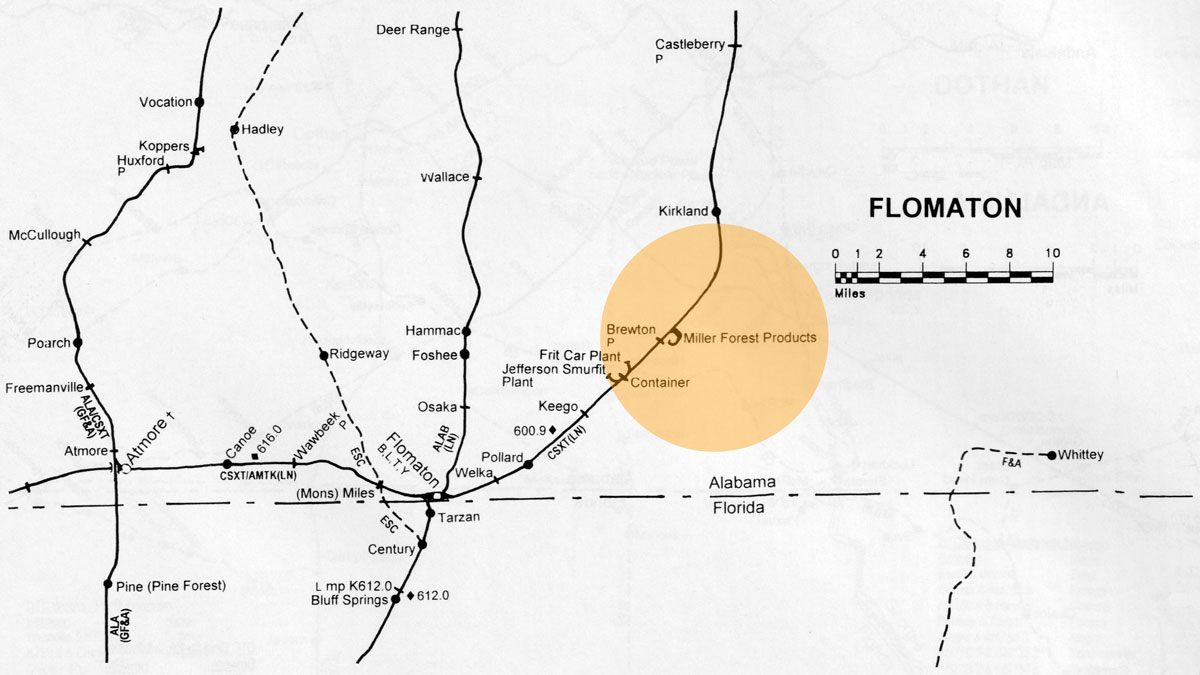
SPV Comprehensive Railroad Atlas / collection
Steam Locomotives

When [predecessor] Cedar Creek Mill finally got the 'railroad bug' in early 1905, they were the last major sawmill operation in the Brewton area that still relied exclusively on water transportation as the method by which their mill was supplied with logs. But when it came time to get into the railroad logging business, Cedar Creek's initial investment in railroad equipment far exceeded what was in use by their competition in the same vicinity. No narrow-gauge wood rail tram road with little 10 or 20 ton locomotives for Cedar Creek. No sir! They started right off with three large standard-gauge 2-8-0 locomotives running on 56 and 60-pound rail.
In October 1991, Thomas R. Miller acquired the controlling interest in Cedar Creek Mill Company. In March 1913, he formally change the name oof the business to T. R. Miller Mill Company as the company is still known today.
Thomas Lawson, Jr. - Logging Railroads of Alabama, 1997
Baldwin #12
T R Miller Mill Company acquired a rare Baldwin 2-4-2 tank locomotive in 1943 from Debardeleben Coal Corp. Previous owners included Alabama Rock & Asphalt and the City of St. Louis. The locomotive was retired in the early 19060s and donated to the City of Pensacola for disply in December of 1967. At some point after 1960, the locomotive rolled over off the rails, crushing the two sand domes atop the boiler and prompting their removal.

T R Miller Mill Company #12
Brewton, Al / Feb 1961 / JCH


T R Miller Mill Company #12
to Birmingham Rail & Locomotive #1666
to Alabama Rock & Ashpalt #1
to Birmingham Rail & Locomotive #1740
to Debardeleben Coal Corp #1
to T R Miller Mill Company #12
to Historic Pensacola, display
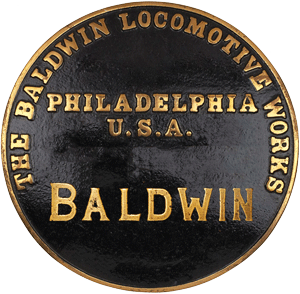
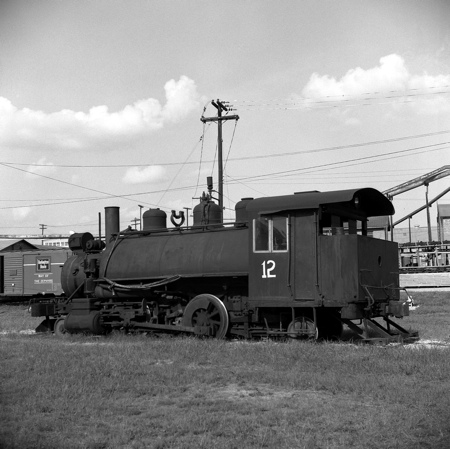
Brewton, Al / Feb 1961 / JCH
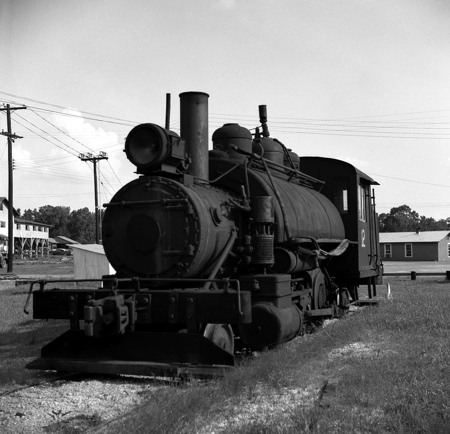
Brewton, Al / Feb 1961 / JCH

Brewton, Al / Jul 1960 / JCH
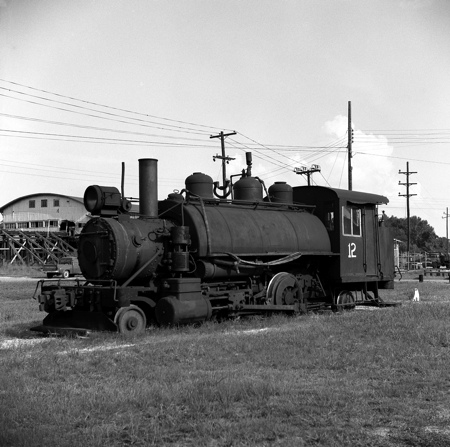
Brewton, Al / Feb 1961 / JCH

Dear Mr. Rucker:
Will get this off while I have a few minutes. Broke the top of my contact printer Friday and it's still in the cabinet shop, will get to your prints when it comes back.
Your 2-4-2T was built for The City of St. Louis as #1. What use they had for an engine I don't know, but that is what the Baldwin records show. I checked the SI&E books, don't see a Jacobi Lumber Company but know I've heard of it somewhere.
Would like to see your neg on it, wonder why it hasn't been scrapped before now?
Best wishes,
C. W. Witbeck
November 1955 correspondence from Witbeck Studio - reprinted in Logging the Mill - Thomas E. McMillan Jr.
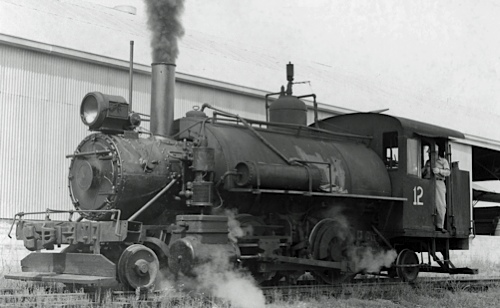
Brewton, Al / 1963 / collection
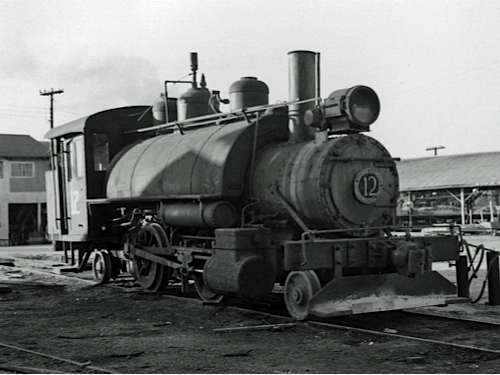
Brewton, Al / Dec 1959 / collection
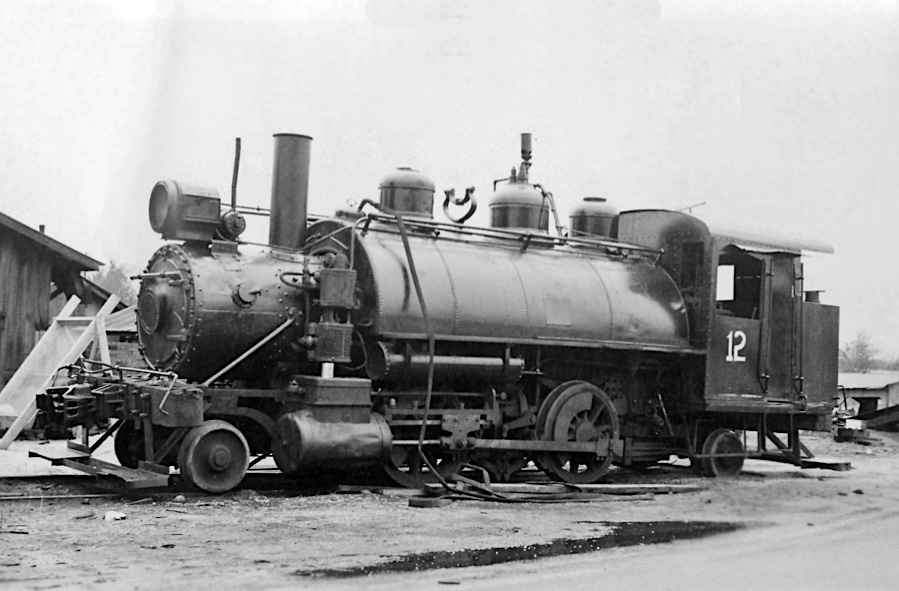
Brewton, Al / Dec 1958 / collection
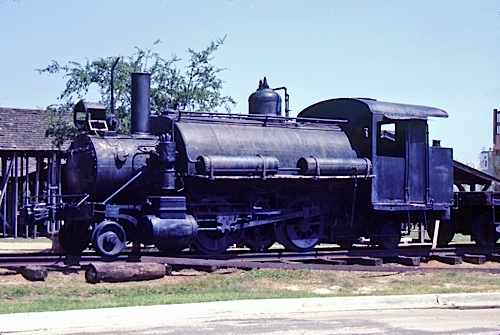
Marine Museum display / Pensacola, Fl / JCH
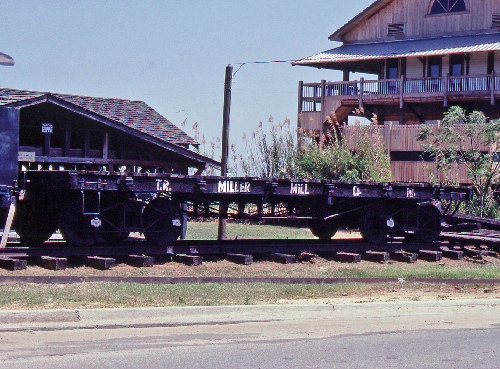
flatcar / Pensacola, Fl / JCH
Baldwin #101
T R Miller Mill Company purchased its last steam locomotive in 1954, a Baldwin-built Prairie type, from the defunct Tuskegee Railroad shortline in central-eastern Alabama. The steamer was the main motive power for the mill in the early 1960s, when the first of three General Electric switchers was purchased. Prairie #101 was retired in 1969 and sold to the Illinois Railway Museum, where it remains today in storage.

T R Miller Mill Company #101
Brewton, Al / Feb 1961 / JCH


T R Miller Mill Company #101
to T R Miller Mill Company #101
to Illinois Railway Museum
restored as Tuskegee #101
stored serviceable


this locomotive also posted in Tuskegee Railroad and Illinois Railway Museum

See also our complete Tuskegee #101 steam scrapbook in Featured Steam
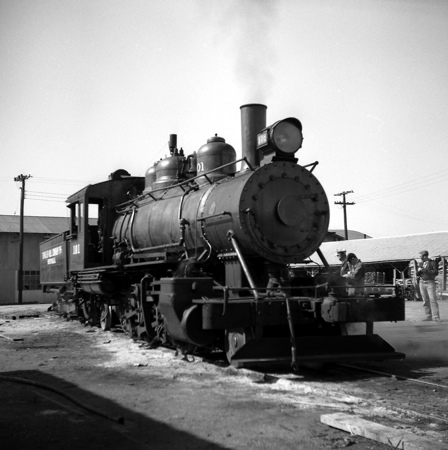
Brewton, Al / Feb 1961 / JCH
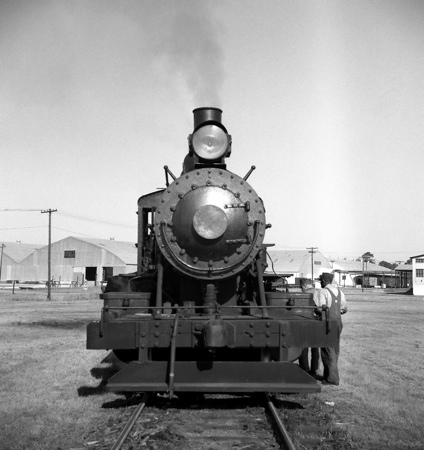
Brewton, Al / Feb 1961 / JCH
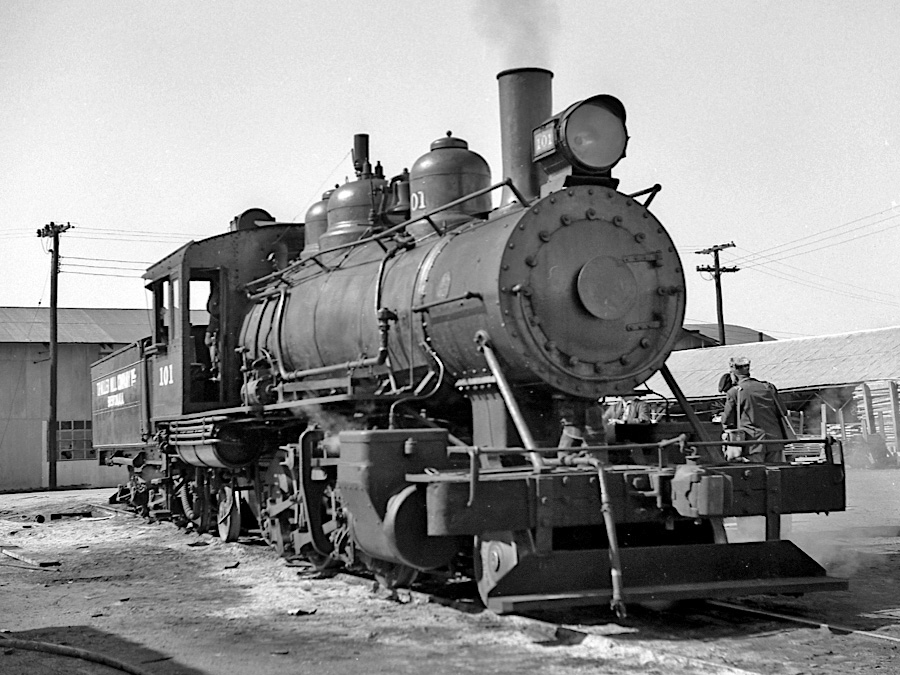
Brewton, Al / Feb 1961 / JCH

The use of this Baldwin 2-6-2 in standby service for the company's one 50-ton diesel-electric locomotive purchased new in latge 1958 was frequent, thought unscheduled. T. R. Miller finally bought a second 50-ton diesel in May 1969 and the No. 101 was sold to a railroad museum in Illinois.
Thomas Lawson, Jr. - Logging Railroads of Alabama, 1997
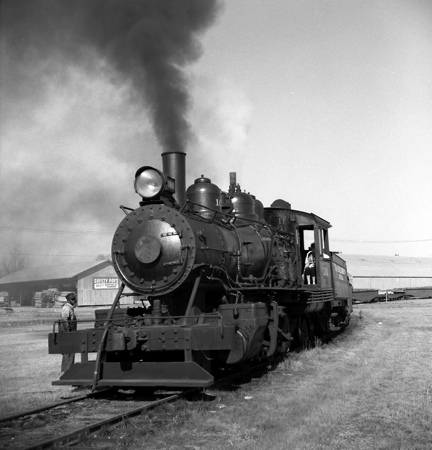
Brewton, Al / Feb 1961 / JCH
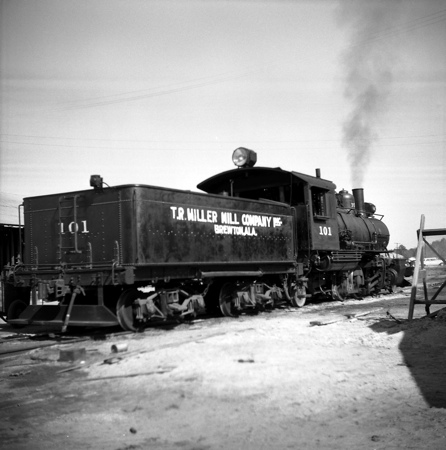
Brewton, Al / Feb 1961 / JCH

Brewton, Al / Feb 1961 / JCH

Brewton, Al / Feb 1961 / JCH
Brewton, Al / Feb 1961 / JCH
 Fireman "Blue"
Fireman "Blue"
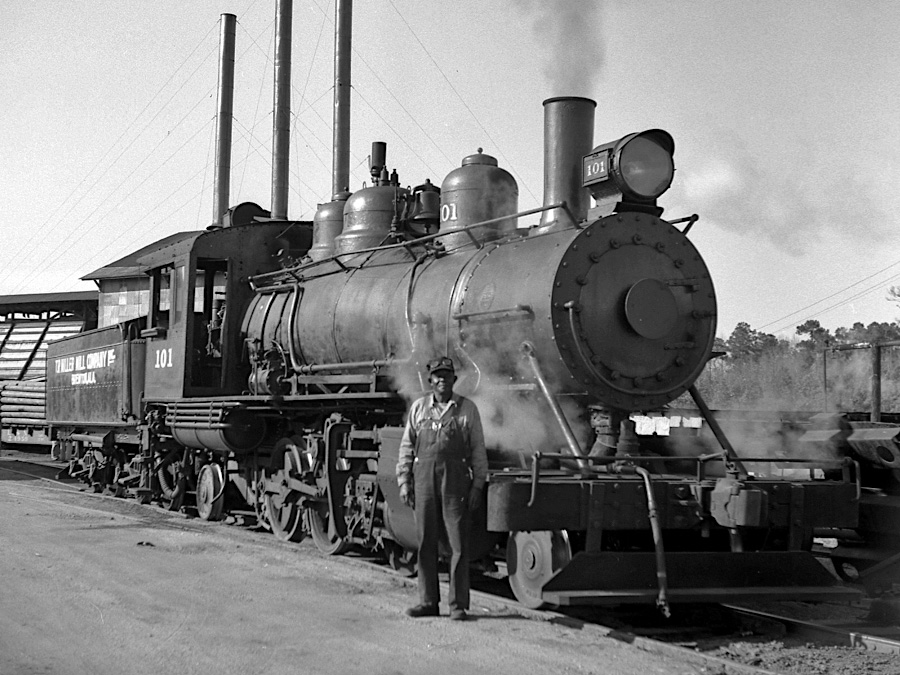
Brewton, Al / Feb 1961 / JCH

Baldwin #101 could easily fit the definition of "classic shortline steam locomotive" -- handsome, nimble, and at home with the slow pace of shunting industrial rolling stock in southern Alabama. My father recalls meeting the kindly black gentleman -- Mr. James Jackson, Sr. -- who was 101's regular fireman at the mill. Everyone on the property called him "Blue." As dad took the handful of pictures of #101 shown on our page, the engineer Mr. Robert Rucker (see below) offhandedly commented that many a railfan had snapped a photo of Blue with the steamer and promised to send him a photo ... but never did. Dad took the pose with a proud Blue (above) and upon returning home to Pensacola promptly mailed the good fellow a copy. Dad always noted how he liked to imagine this photo sitting framed on a mantle in Blue's home.

Illinois Railway Museum / Union, Il / Jan 2017 / J.D. Marzec

 I was so delighted last year to receive the following notes from J.D. Marzec, a member of the steam crew at the fabulous Illinois Railway Museum. He found my Miller Mill page here and we began a correspondance about fireman Blue and adding his picture to the honorable wall of IRM locomotives in their steam shop (shown above). I'm so glad Blue's legacy working #101 will carry on in Illinois!
I was so delighted last year to receive the following notes from J.D. Marzec, a member of the steam crew at the fabulous Illinois Railway Museum. He found my Miller Mill page here and we began a correspondance about fireman Blue and adding his picture to the honorable wall of IRM locomotives in their steam shop (shown above). I'm so glad Blue's legacy working #101 will carry on in Illinois!
Hi, I am a Steam Team volunteer at the Illinois Railway Museum and saw the page on your website on #101. I was wondering if you have any higher resolution files for the old pics you have of 101, specifically the one of the fireman known as "Blue" next to 101. We want to hang that pic in our shop with a brief description of him.
J.D. Marzec
IRM Steam
Team Crew Caller
Thanks for those pics. I'll let you know if we want any others. Once I get the pics up in the shop I'll send you a pic of it. On the wall for our small machine shop in the steam dept we have pics of our locomotives in service, so it will go on there. I'll give credit to the photographer in the little blurb on the pics. Let me know if you come to IRM. I am there most Saturdays in the steam shop. I am also a fireman on our steam locomotive and I am the crew caller for the steam crew.
I also saw on your website the article on the Engineer Robert C Rucker. It said he engineered at Lee Cypress Co. IRM has #18 from Lee Cypress. I helped move that loco to IRM back in 2008. It's a crazy small world that two locomotives that Robert Rucker ran in service ended up at the same museum.
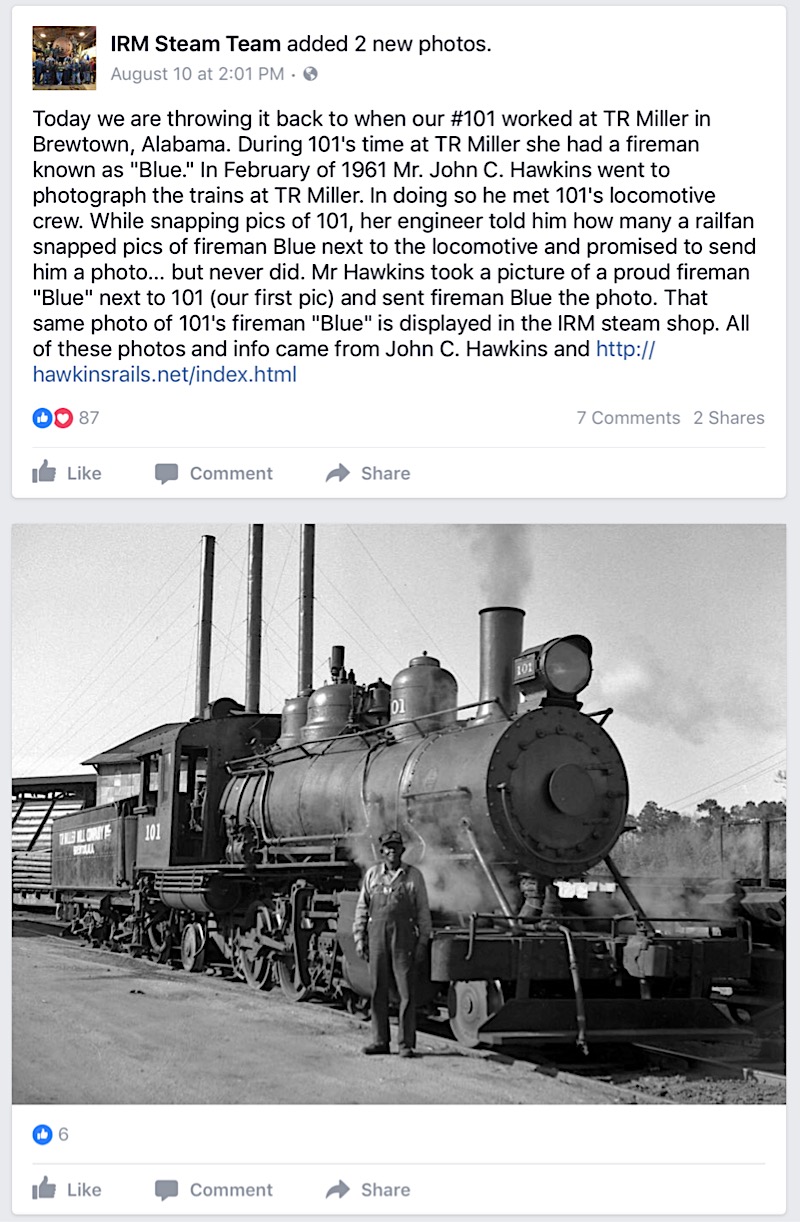
Facebook post / Aug 2017
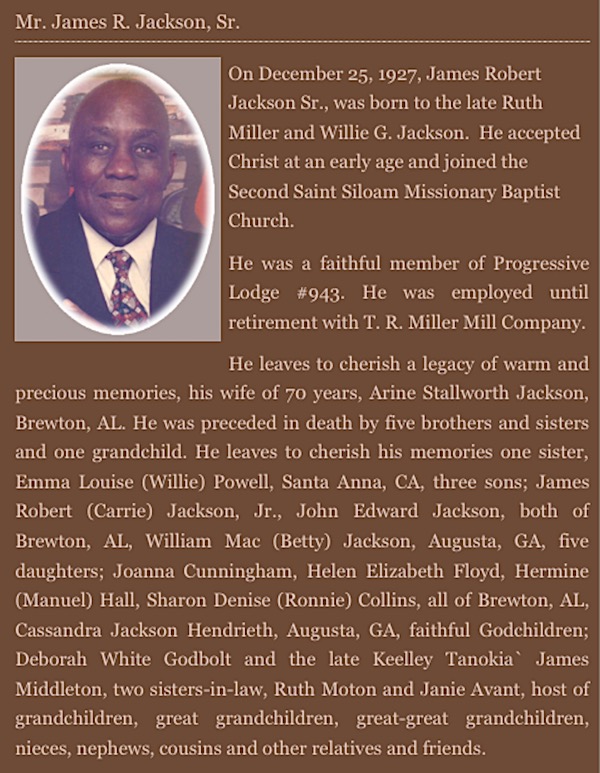
Jackson obituary / Feb 2018 / web

Brewton, Al / Dec 1958 / collection
 Robert C. Rucker
Robert C. Rucker

I was delighted to receive some online correspondence from Dr. Brian Rucker, professor of history and the grandson of a long-time Miller Mill railroader. Brian's initial note to me included these lines:
I saw your shots of the Baldwin steam Locomotive 101 that used to operate at the T. R. Miller Mill Co. in Brewton, AL. My grandfather, Robert C. Rucker, ran it up until it was sold in the late 1960s. He died in 1969, shortly thereafter. He even went up to the mill on Saturdays and offered excursion rides. I have a lot of old photos of that train; it was his favorite, and he had been an engineer since the 1920s!
But my delight shot through the roof when Brian graciously responded to my request to send along some of his grandfather's photographs of Baldwin #101. The images he sent back are wonderful, and I am grateful for his willingness to allow me to add them to my Miller collection here. Of particular interest is the photograph of #101 loaded onto a flatcar for transport to the Illinois Railway Museum (see below). Thinking about my father's several visits to the mill in the early 1960s, there is every chance that he met and conversed with Mr. Rucker, whose biography in brief is included here, thanks to his grandson:
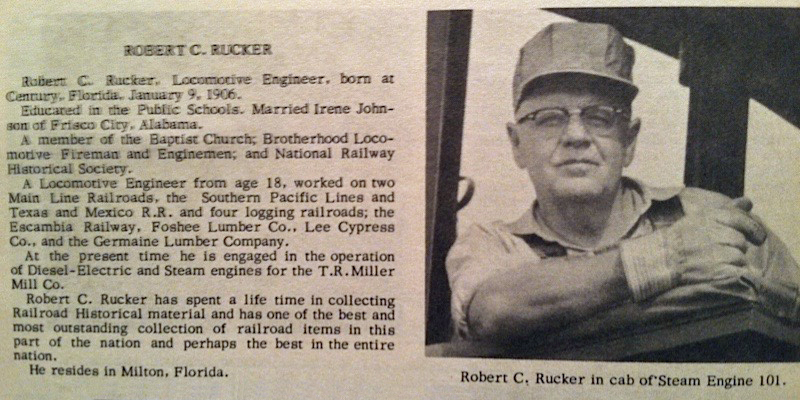
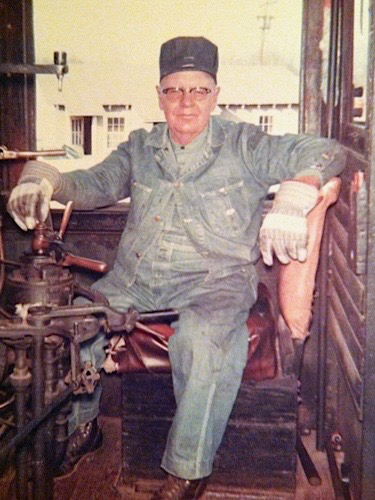
Robert C. Rucker
Brian Rucker collection
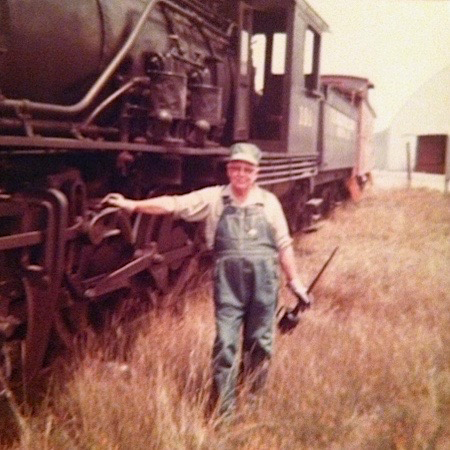
Brian Rucker collection
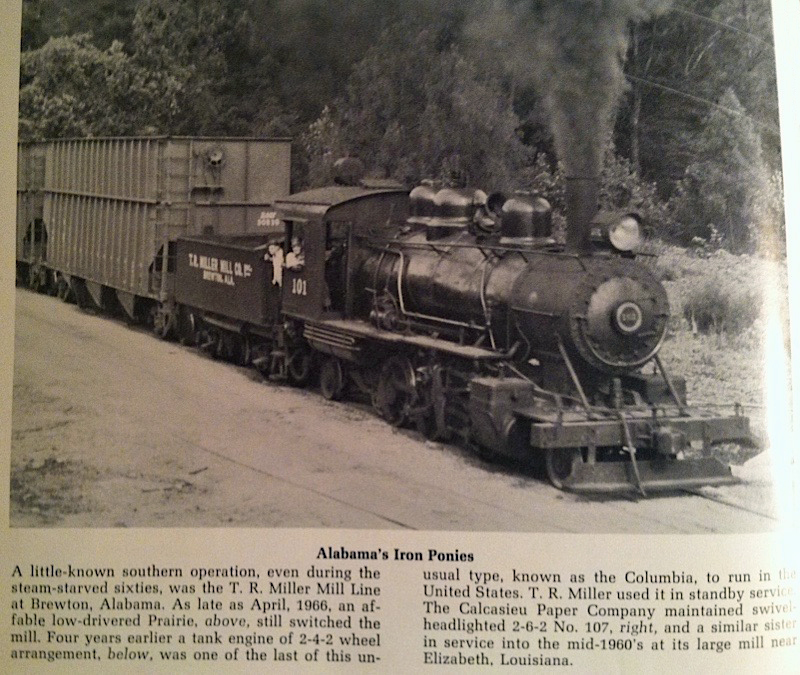
from Steam in the Sixties
- Ron Ziel and George Foster / Brian Rucker collection
HawkinsRails thanks Brian Rucker for use of the images below from his personal collection

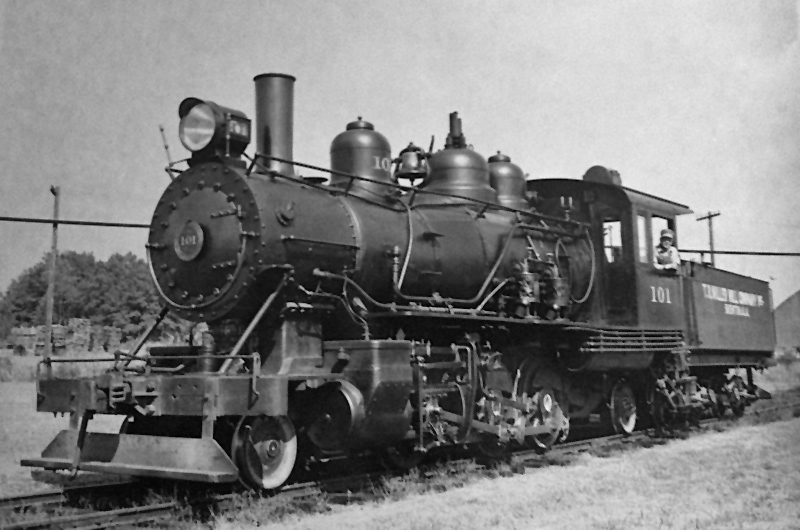
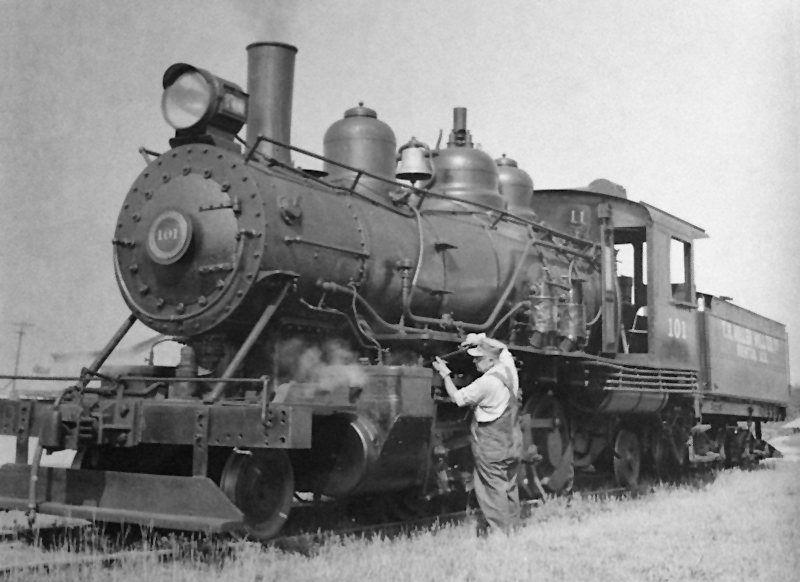
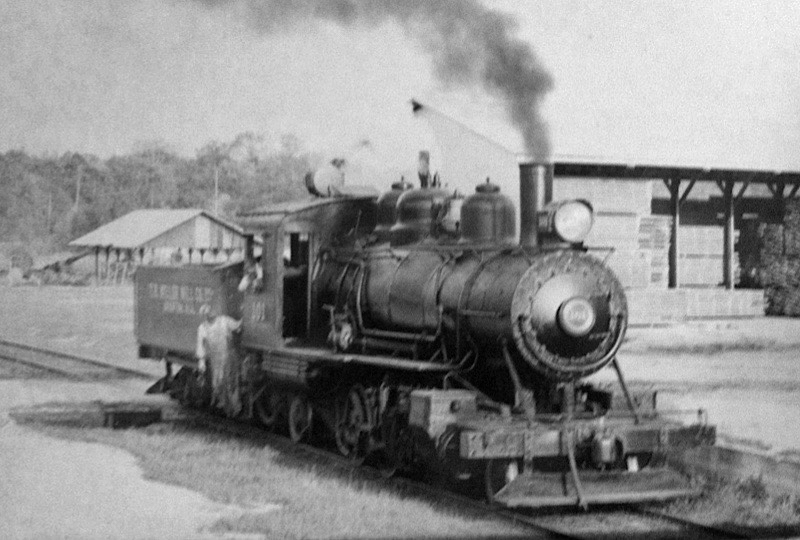
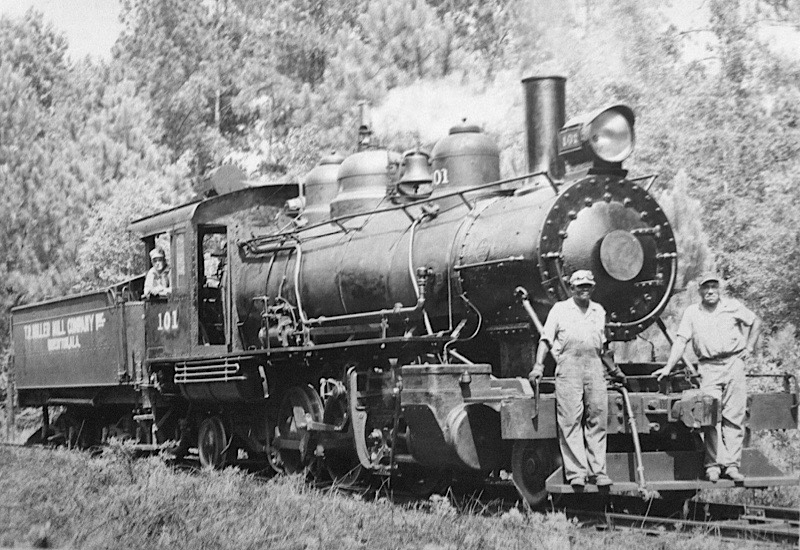

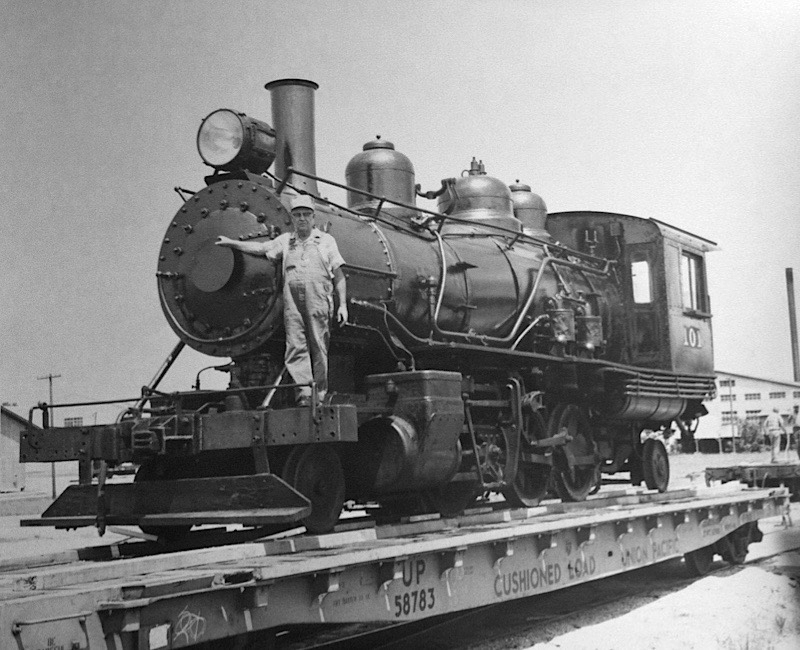
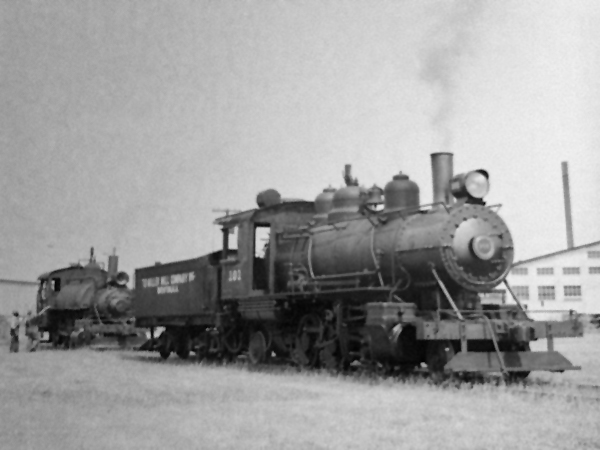
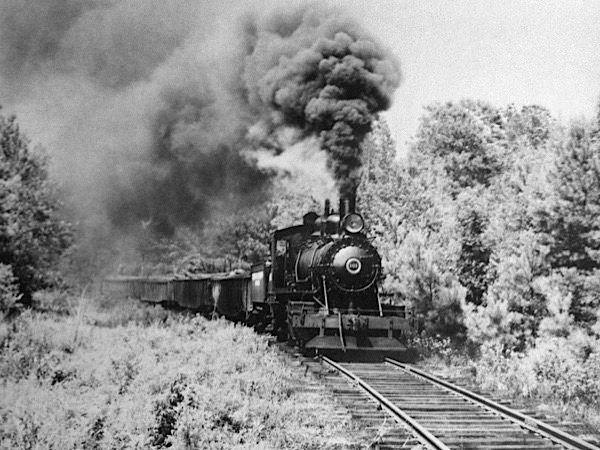
HawkinsRails thanks Bob Albertson of the Illinois Railway Museum for use of his article on Tuskegee #101

SWEET HOME ALABAMA
Tuskegee RR #101, with its Alabama pedigree, is a soft spoken southern engine. The diminutive 2-6-2 Prairie type locomotive was built in 1924 by the Baldwin Locomotive Company at Eddystone, PA as a saturated steam coal burner for the Tuskegee RR with a $21,250 price tag.
At the time of its purchase, it joined a roster that included 1903 Baldwin 4-4-0 #6 and 1905 Rogers 2-6-0 #7 on the 5.7 mile line from Tuskegee north to the interchange with the Montgomery & West Point RR at Chehaw, AL. The first two miles out of Tuskegee were in the valley of a small stream. The rest of the run to Chehaw was gently upgrade.
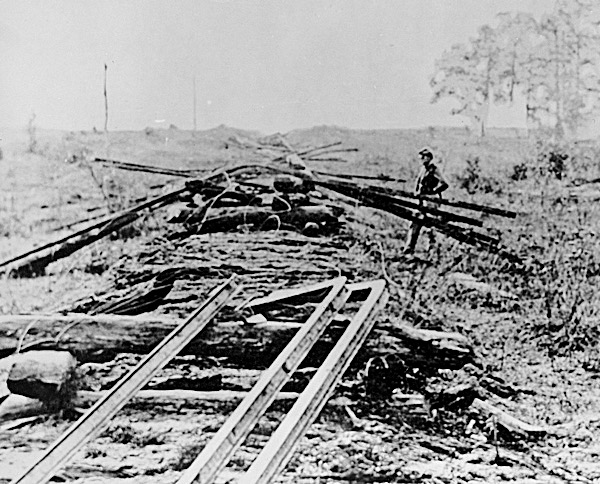 The Tuskegee RR was incorporated in 1860, and was built that year to 60" gauge with the labor of 500 slaves from nearby plantations. It didn't operate for long since 30 miles of the Montgomery & West Point RR to the Chehaw Station were destroyed by Major General Lovell Rousseau's Union soldiers during their raid on the Montgomery area in July 1864. The main objective was achieved as the track, bridges and stations were laid to waste. The raid curtailed the ability of the South to resupply Atlanta during the siege of Atlanta that also occurred during this time frame. The rails of the Tuskegee RR itself were melted down by the Confederates for armaments.
The Tuskegee RR was incorporated in 1860, and was built that year to 60" gauge with the labor of 500 slaves from nearby plantations. It didn't operate for long since 30 miles of the Montgomery & West Point RR to the Chehaw Station were destroyed by Major General Lovell Rousseau's Union soldiers during their raid on the Montgomery area in July 1864. The main objective was achieved as the track, bridges and stations were laid to waste. The raid curtailed the ability of the South to resupply Atlanta during the siege of Atlanta that also occurred during this time frame. The rails of the Tuskegee RR itself were melted down by the Confederates for armaments.
Post war, the rights to the railroad were bought at a sheriff's sale by developers in 1869 and the Tuskegee RR was rebuilt in 1872 to 36" gauge. The track was ballasted with gravel, cinders, and sand. The railroad had one 0-4-2T and two 0-4-4T locomotives. The interchange was still at Chehaw with the Montgomery & West Point that became the Western Rwy of Alabama. (That route eventually became CSX and is still in use today.) There was no direct interchange since the two railroads were different gauges, but that was rectified in August of 1898 when the Tuskegee RR was changed to standard gauge. (Twelve years later than the last of the major southern railroads.)
 The original Tuskegee RR was built to support the town of Tuskegee, but the post-Civil War version also supported the Tuskegee Normal School for Colored Teachers. This is the reconstruction black institution that became the Tuskegee Normal & Industrial Institute and is now Tuskegee University. The Institute was established by Booker T. Washington as its first Principal in 1881. Originally built on 100 purchased acres, it now covers 2300 acres. Scientist George Washington Carver of peanut fame was one of their professors. The other claim to fame for Tuskegee was the establishment of the black pilot training center for the US Army Air Corps in 1943 at the University's School of Aviation and at nearby Moton Field. The Tuskegee Airmen became a highly decorated unit, flying fighter aircraft in Europe.
The original Tuskegee RR was built to support the town of Tuskegee, but the post-Civil War version also supported the Tuskegee Normal School for Colored Teachers. This is the reconstruction black institution that became the Tuskegee Normal & Industrial Institute and is now Tuskegee University. The Institute was established by Booker T. Washington as its first Principal in 1881. Originally built on 100 purchased acres, it now covers 2300 acres. Scientist George Washington Carver of peanut fame was one of their professors. The other claim to fame for Tuskegee was the establishment of the black pilot training center for the US Army Air Corps in 1943 at the University's School of Aviation and at nearby Moton Field. The Tuskegee Airmen became a highly decorated unit, flying fighter aircraft in Europe.
 At the time #101 arrived on the property, principal freight on the line was lumber and coal for the power plant at the University. Number 101 hauled a mixed train with Tuskegee's only passenger car three times a day to the interchange in Chehaw.
At the time #101 arrived on the property, principal freight on the line was lumber and coal for the power plant at the University. Number 101 hauled a mixed train with Tuskegee's only passenger car three times a day to the interchange in Chehaw.
The 1920's were good times for the railroad, but the 1930's Great Depression hit the area hard. Truck competition was increasing. Timber shipments slumped and stopped completely in 1936. In 1939 President Roosevelt wanted to use the Tuskegee RR for a visit, but was turned down because the presidental car, Ferdinand Magellan, was too heavy for their track. Passenger service ended in 1941 because their only "Jim Crow" segregated coach wore out.
World War II brought a slight increase in traffic, but only enough to warrant 2 freight trains a week. Post war, rail traffic turned down further. Though the railroad carried on with a few of their other steam engines until abandonment in 1963, they sold #101 in 1954 to the T. R. Miller Mill Company of Brewton, AL. Once closed down, the line was quickly salvaged and little remains today of what was the Tuskegee RR. Number 101 is the only surviving piece of Tuskegee RR equipment.
When it was sold, #101 moved farther south in Alabama to work for the T.R. Miller Mill Company in Brewton, AL just across the Florida panhandle border north of Pensacola. That company started in 1848 on the banks of Cedar Creek as one of the first permanent sawmills in the South. Ownership changed to T.R. Miller in 1872 and they've been in continous business there ever since. When #101 arrived it was converted to burn oil and joined Baldwin 2-4-2T #12 on their locomotive roster.
 The Miller Mill company is a privately owned company that specialized in Yellow Southern Pine products. They have two mills. The first and main one produces lumber and lumber products. The second mill was added in 1927 about a mile east to produce treated poles and pilings. The two mills were linked by their railroad.
The Miller Mill company is a privately owned company that specialized in Yellow Southern Pine products. They have two mills. The first and main one produces lumber and lumber products. The second mill was added in 1927 about a mile east to produce treated poles and pilings. The two mills were linked by their railroad.
T.R. Miller has a pioneer in land and timber management. They hold the second Tree Farm certification in the US and currently manage over 215,000 acres.
 In the late 1960's T.R. Miller dieselized and in 1969 #101 was sold to then IRM president Herb Hanson. The Miller operation today uses a GE center-cab diesel.
In the late 1960's T.R. Miller dieselized and in 1969 #101 was sold to then IRM president Herb Hanson. The Miller operation today uses a GE center-cab diesel.
Arriving at IRM, #101 was put into service a year later in 1970. Herb Hanson had put his friend Fred Chambers in charge of restoring #101 to operation and he was successful. For some reason Fred disengaged and Dennis Daugherty took over care of the engine. But leaking tubes quickly sidlined the engine and the IRM steam team undertook their first major boiler repair by replacing 32 tubes and returned the engine to operation in time for the 4th of July weekend in 1971.
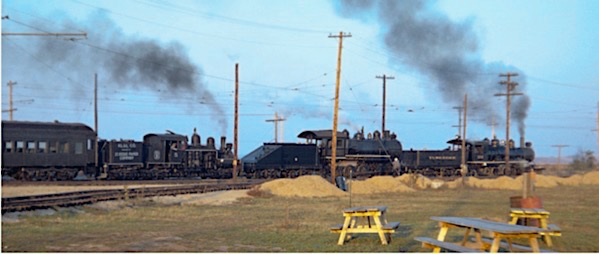 In 1971 IRM was able to run a tripple-header with Shay #5 (in steam at various times at Union since 1967), Commonwealth Edison #5 (first steamed in 1971 and another Herb Hansen purchased engine) and Tuskegee #101.
In 1971 IRM was able to run a tripple-header with Shay #5 (in steam at various times at Union since 1967), Commonwealth Edison #5 (first steamed in 1971 and another Herb Hansen purchased engine) and Tuskegee #101.
Number 101 is the only 2-6-2 Prairie tender engine in the collection. The Prairie type locomotive was an outgrowth of the 2-6-0 type, with the advantage of having a leading and trailing truck to allow it to traverse the rails equally well in either direction. This was especially helpful when the engine spent a lot of time running in reverse. (Which was the case when working on the Tuskegee and T.R. Miller. And also at IRM!)
The CB&Q and Sante Fe had the biggest fleets of 2-6-2's in the US. 2-6-2's were supposed to be somewhat unstable at higher speed, which was never a problem wherever she operated. Number 101 was a unique type on both of the small rosters for which she worked.
 #101 operated at IRM in the 1970's and 1980's in the days before the FRA 1472 day rule went into effect (2000). At that time, the boilers were instected and certified by the State of Illinois. In most cases, boilers needed to meet ASME code or have been previously operated and certified in Illinois prior to 1951 to be re-certified by the state. The Shay had an ASME boiler so was allowed to run. The ComEd 5 ran its entire career in Illinois so was grandfathered and allowed to run. Before being sold to the Frisco, 1630 was owned by the Pennsylvania Railroad and was assigned to their Southwestern Division (Lines West) which included Illinois, so it was grandfathered and allowed to run. The 101 had an Alabama boiler ticket, but was allowed to run after negotiations with the state.
#101 operated at IRM in the 1970's and 1980's in the days before the FRA 1472 day rule went into effect (2000). At that time, the boilers were instected and certified by the State of Illinois. In most cases, boilers needed to meet ASME code or have been previously operated and certified in Illinois prior to 1951 to be re-certified by the state. The Shay had an ASME boiler so was allowed to run. The ComEd 5 ran its entire career in Illinois so was grandfathered and allowed to run. Before being sold to the Frisco, 1630 was owned by the Pennsylvania Railroad and was assigned to their Southwestern Division (Lines West) which included Illinois, so it was grandfathered and allowed to run. The 101 had an Alabama boiler ticket, but was allowed to run after negotiations with the state.
The railroads number 101 worked on were small and thus had small shops and workforces. She was pretty worn when she got to IRM, and more years of operation were coaxed out of her than could reasonably be expected. 101 was plagued constantly by leaking tubes. The oil fire was hard on the tubes. Tubes were only replacing that were needed to to keep operating, and the replacement tubes were used ones so didn't last as long as new. Often tubes around the bad tube would also be removed to make it easier to do the repairs. The Rail & Wire archives chronicle a litany of repairs over the years just to keep her going:
1972 – New rear truck wheels were installed on the tender (old were thin and had flat spots). New front foot steps. Work was done to remove pipes, sheet metal and insulation from the cab of the engine. Also insulation was removed from over the firebox outside the cab. The fire brick was removed from inside the fire box and with the entire box exposed she was hydroed and inspected. As expected several bad stay bolts were found along with a few bad tubes. Later the bad bolts and tubes were cut out. In August work was put on hold to work on CE #5. Work resumed in September with the installation of 6 new stay bolts and 12 new boiler tubes, plus replacement of the fire brick. Testing revealed more problems and they were dealt with. The air brakes valves were cleaned and tested. The engine and tender were converted from waste packing to pads in the journal boxes.
1973 – The tender was patched with several large rubber patches inside the water compartment. To help keep the tender sides together, a turnbuckle was applied between them. New valve stem packing was applied to both sides. The boiler and fire box was washed out and the throttle lapped in. The boiler tubes were cleaned. A few tubes rolled and seams were caulked. In May a spring equalizer hanger broke. After attempting to get the old part out, it was welded in place (hard to get at of course) and the next day the bar was put back in place. The main rod brasses (front and back) were removed and ends faced off to allow them to draw tight on the crank and wrist pins. Despite these problems, #101 was the main workhorse in 1973.
1974 – Most of the year was handled by CE #5 (coal burner). #101 was out of service until late in the year due to several broken stay bolts and a broken stud. The sheet metal was removed from the entire boiler for the first time at IRM, and was chipped and repainted. But this worked out okay, as with the high price of oil – we probably couldn't have afforded to run her even if we were able to get the oil. Ran on Members Day.
1976 - Twice the crosshead gib broke and was repaired. Tubes were replaced, the headlight repaired and lubricators repacked. It was back in service by Members Day to double-head with 1630 even though she didn't yet have the boiler jacket put back in place.
1977 - #101 was inspected by the State and got her operating certificate for 1977. Eight new boiler tubes were installed. Ran on Members Day.
1978 – After 2 years of seeing little service, #101 was used the first 2 months of operation. Double-headed again this year with 1630 for Members Day weekend.
1979 - Painted during 1979.
1980 – Operated on Members Day pulling a caboose train.
1982 – Welded patches on the tender and repainted the boiler.
1987 – Got new brake shoes and a new injector.
By the end of the 1980's all the tubes were removed in anticipation of the 1472 day overhaul as they could not be rolled over anymore to seal leaks. But futher inspection found that corrosion at the bottom of the smoke box was bad enough that it would necessitate a total replacement like the Shay is currently getting. Other major and expensive problems were very rusted studs on the cylinder casting making it very hard to fix, worn wheels and the fact that the running gear was worn out. The most critical issue, and the final straw that saw her removed from service, was that the crown brasses on the drive axels all needed to be replaced. By 1990 all the tubes were removed, as well as the pony truck – and it has been dissembled ever since.
#101 was a good steamer if you knew how to fire her. Dennis Daugherty figured it out and taught Dave Conrad, Phil Hehn, and Mark Secco. (Phil and Mark are still IRM steam engineers today – 2017.) Other firemen were not as successful. With the lead and trailing trucks she tracked well going in either direction on the IRM rails.
One of the problems being an oil burner is that her exhaust was directly below the trolley wire. It would be oily and foul the overhead trolley wire. Periodically the line car had to be taken out and the trolley wires wiped down to get the oil off. The oily residue may have helped to make the trolley poles glide over the wire better, but it didn't help the electrical conductivity.
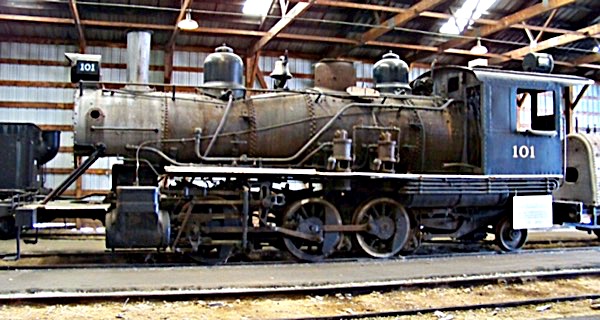 For many years she was displayed in barn 9 (minus tubes, smoke box bottom and pony truck), while the steam team devoted their efforts to 1630, the Shay and 428. The engine and tender were separated for a few years with the tender placed outside, but they were re-united and moved into Barn 14 in 2016.
For many years she was displayed in barn 9 (minus tubes, smoke box bottom and pony truck), while the steam team devoted their efforts to 1630, the Shay and 428. The engine and tender were separated for a few years with the tender placed outside, but they were re-united and moved into Barn 14 in 2016.
It's not inconceivable that someday #101 could be restored to operate again. She's a saturated steam engine, has leading and trailing trucks and is the right size for IRM operations. Knowing exactly what is needed may outweigh selecting another engine with many unknowns. Some work has even been done already. A new pony truck axel was made and new wheels pressed on to it. The pony truck boxes have been rebuilt, the boxes machined and new springs are ready. Hub liners have not been put back on the boxes yet, and of course the truck has not been attached. New crown brasses for the drivers are available, and making new patterns for coal grates has been started.
Major items down the road to be planned for are dropping the last driver set to remove the oil pan and fabricate and install a new ash pan, installing a new smoke box bottom (new rolled steel has already been acquired to do this), running gear repair, conversion back to coal firing, fabricating some or all of a new boiler jacket, repair / conversion of the tender back to coal, and repair of the trailing truck like what is needed for the pony.
So for now, an old workhorse has been put out to pasture, her glory days behind her. This Alabama engine has sure had an interesting and storied past, and was one of the pioneers at IRM. The engine served 45 years in Alabama. It's now been at IRM for 49 years.
Rail & Wire article 1-23-18 by Bob Albertson
Diesel-electric Locomotives
T R Miller Mill Company has rostered 3 General Electric centercab switchers since the retirement of its steam locomotives. Two 50-ton models were both off the property by 1990, one scrapped and the other sold to nearby Frit Car Company. A 65-ton centercab was purchased used in 1980 and remains the mill's sole power for switching duties. The unnumbered locomotive as been rebuilt several times, and currently features replacement prime movers and EMD electrical components and control stand.
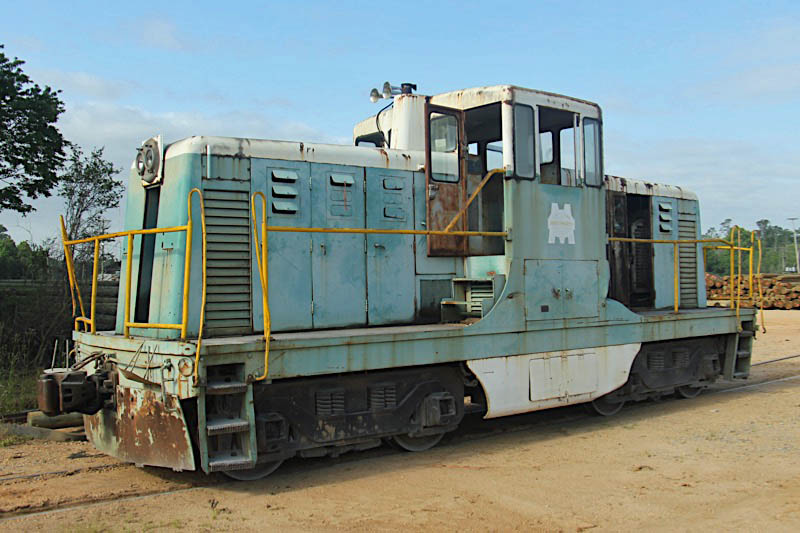
T R Miller Mill Company
Brewton, Al / May 2019 / RWH


T R Miller Mill Company
to United States Air Force #7352
to General Electric, Chamblee GA
to T R Miller Mill Company
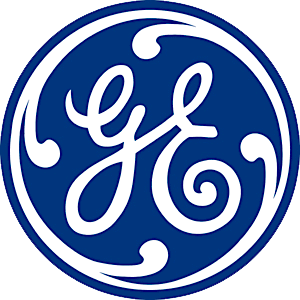
HawkinsRails thanks T R Miller Mill Co. management for the opportunity to photograph the switcher onsite

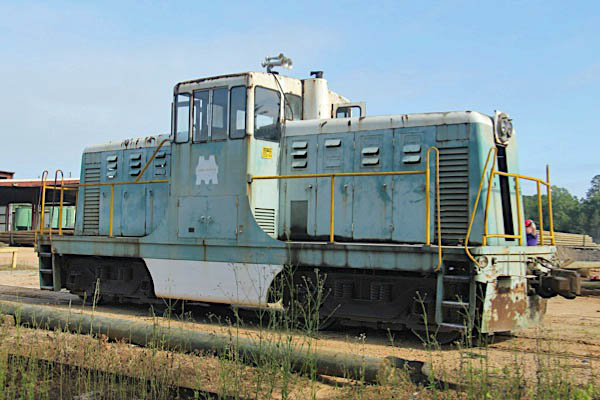
Brewton, Al / May 2019 / RWH
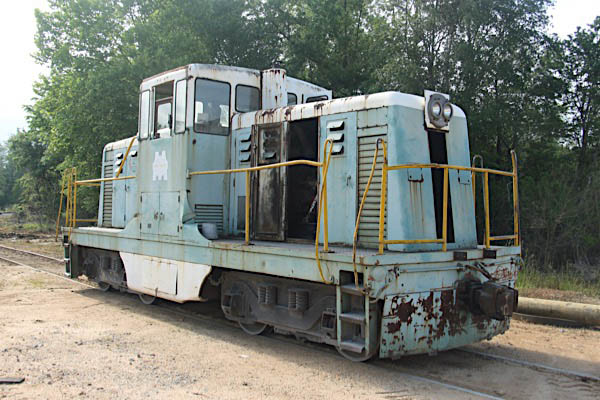
Brewton, Al / May 2019 / RWH
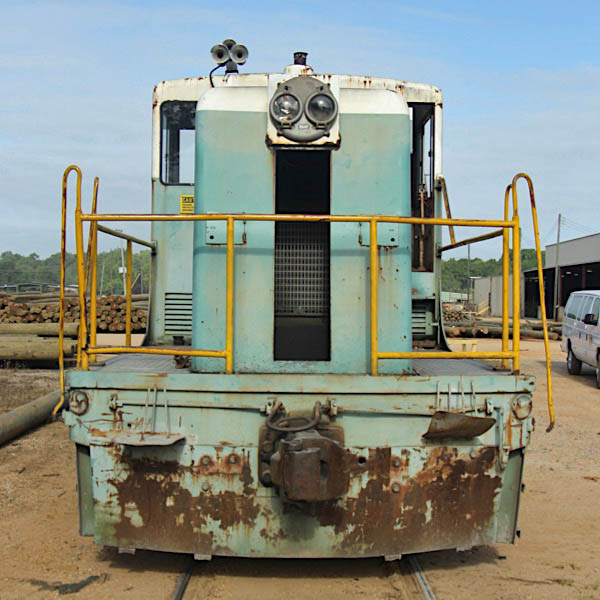
Brewton, Al / May 2019 / RWH
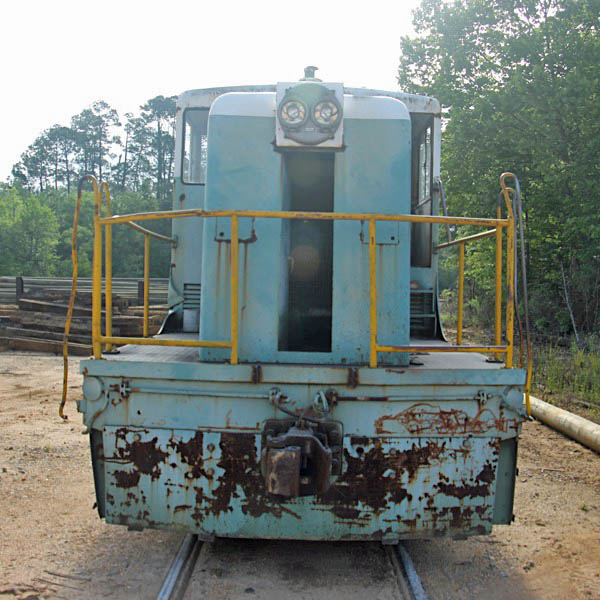
Brewton, Al / May 2019 / RWH

Brewton, Al / May 2019 / RWH
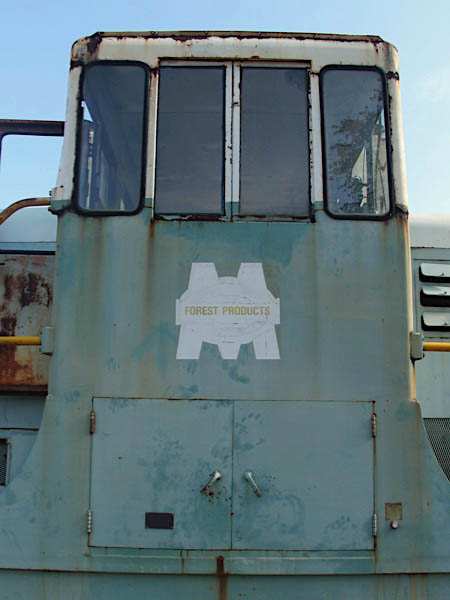
RWH

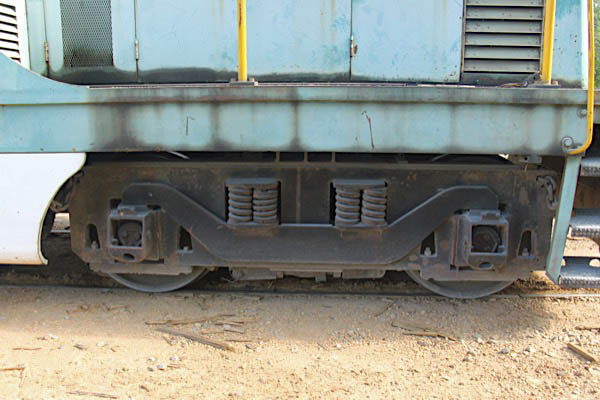
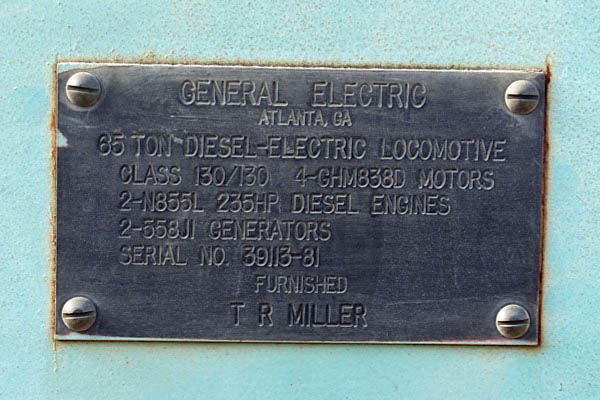
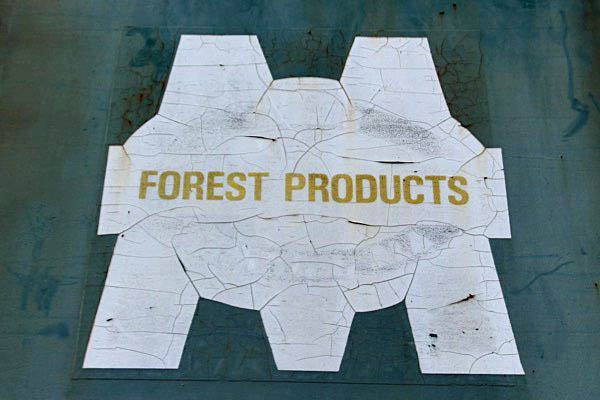

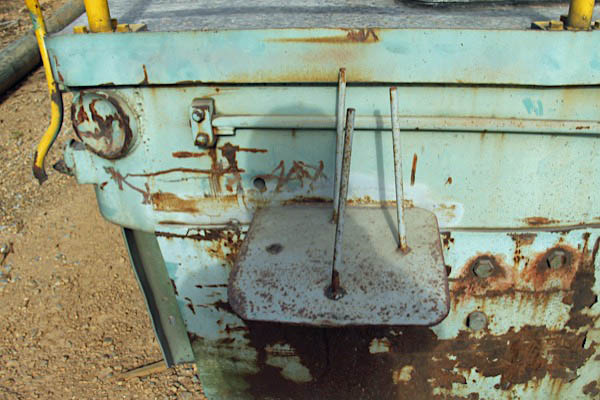

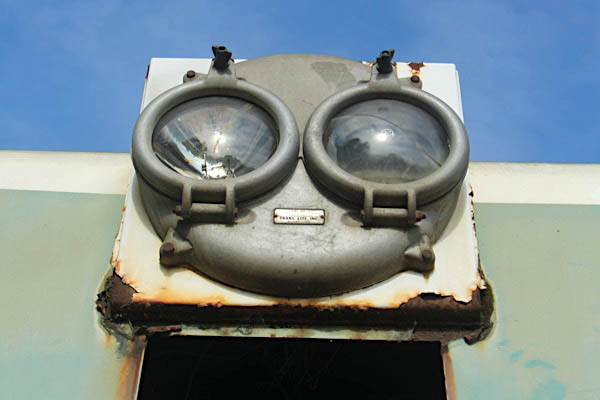
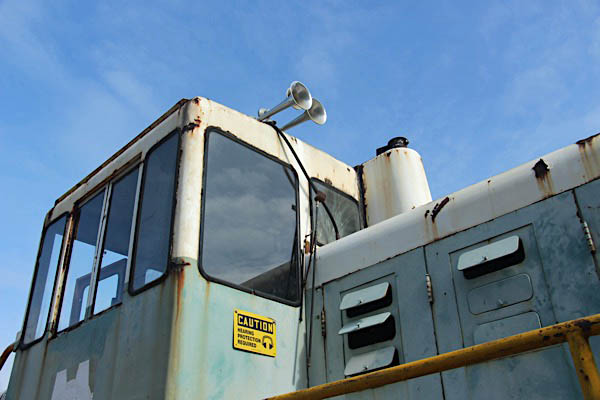
Brewton, Al / May 2019 / RWH
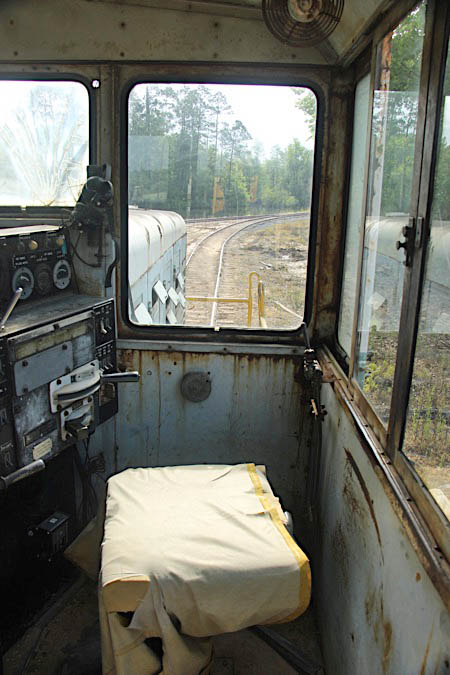
May 2019 / RWH
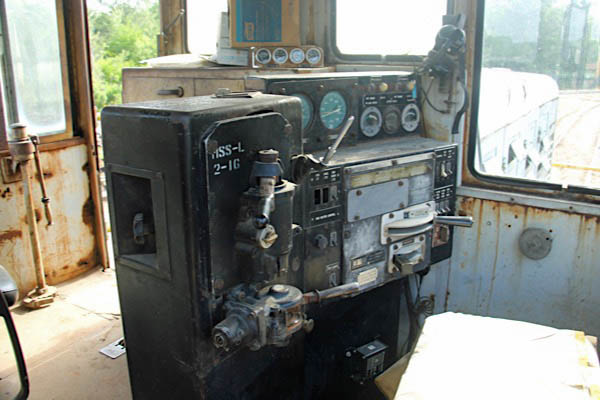
Brewton, Al / May 2019 / RWH
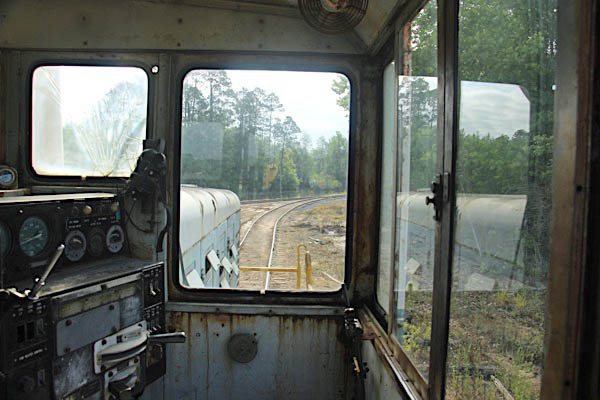
Brewton, Al / May 2019 / RWH
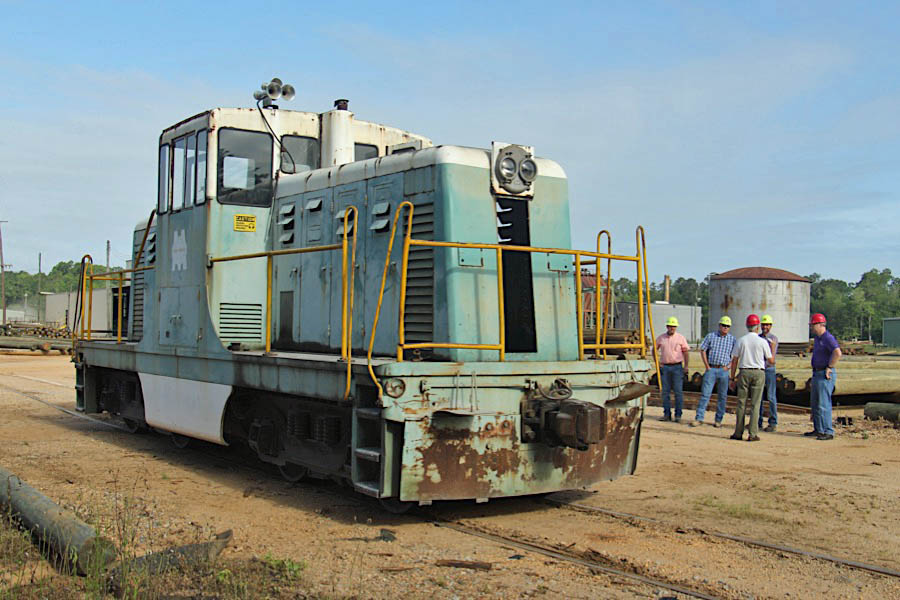
Brewton, Al / May 2019 / RWH
HawkinsRails thanks railfan Chuck Johns Jr. for use of these switcher and mill photographs

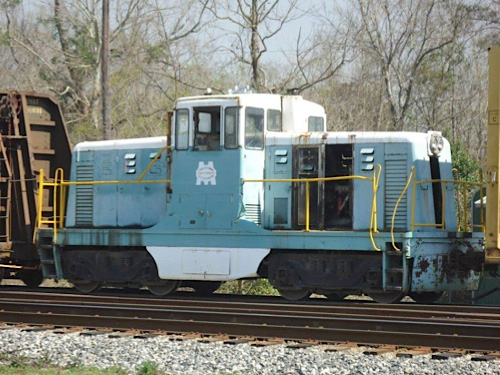
Brewton, Al / Mar 2012 / Chuck Johns
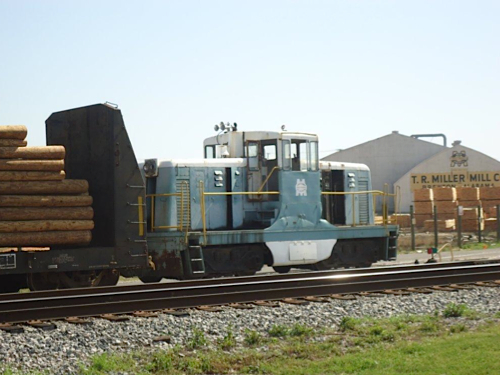
Brewton, Al / Mar 2012 / Chuck Johns
 Location
Location
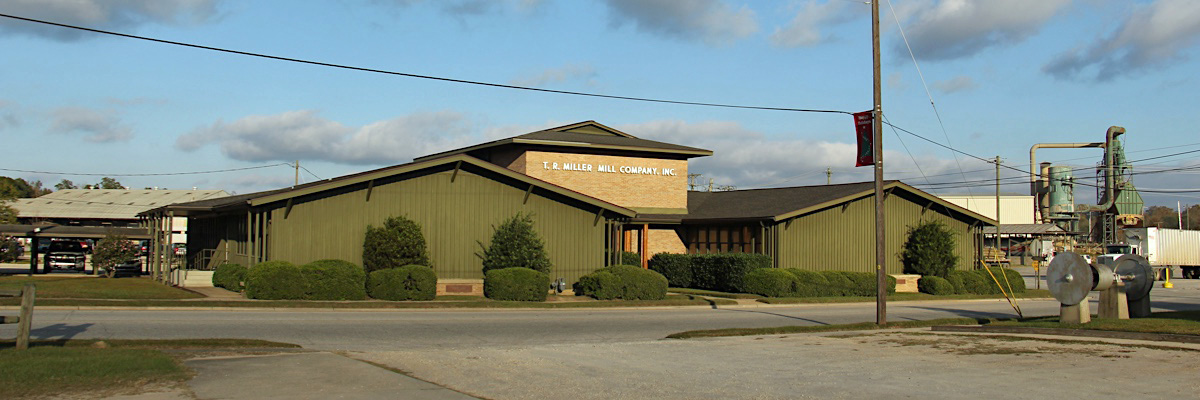
Brewton, Al / Nov 2018 / RWH

Click to see T R Miller Mill location in Brewton plotted on a Google Maps page
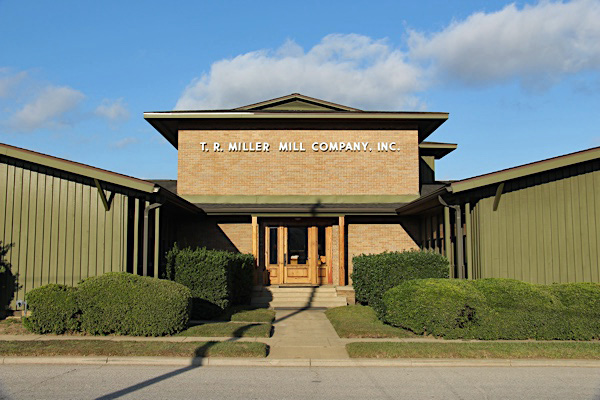
Brewton, Al / Nov 2018 / RWH
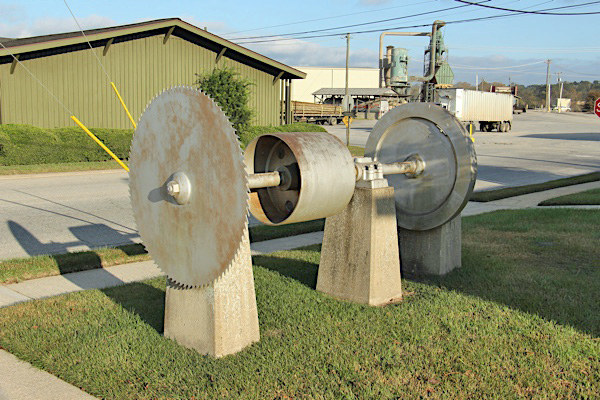
Brewton, Al / Nov 2018 / RWH
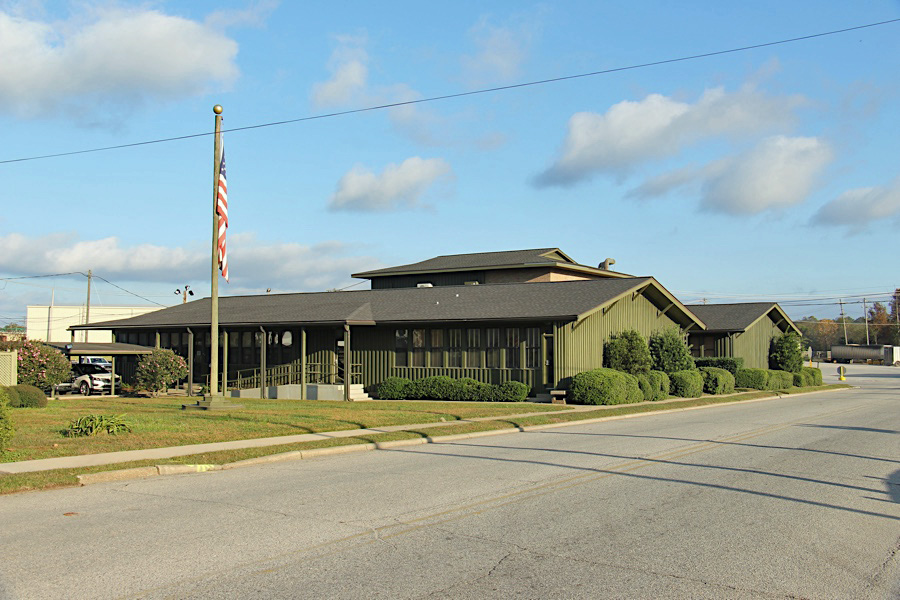
Brewton, Al / Nov 2018 / RWH

 Mr. Miller was one of the earliest mill owners to recognize that if the company was to grow and survive for future generations it must adopt a more conservative operation. Therefore, he initiated selective cutting and a program of replanting young pines on cutover that were almost bare. This foresight enabled the company to become one of the largest mills in the southeast and to have a record 134 years of continuous operation, white other mills have closed for lack of timber. The company owns many thousands of acres of timberland in south Alabama and northwest Florida.
Mr. Miller was one of the earliest mill owners to recognize that if the company was to grow and survive for future generations it must adopt a more conservative operation. Therefore, he initiated selective cutting and a program of replanting young pines on cutover that were almost bare. This foresight enabled the company to become one of the largest mills in the southeast and to have a record 134 years of continuous operation, white other mills have closed for lack of timber. The company owns many thousands of acres of timberland in south Alabama and northwest Florida.
Annie C. Waters - History of Escambia County
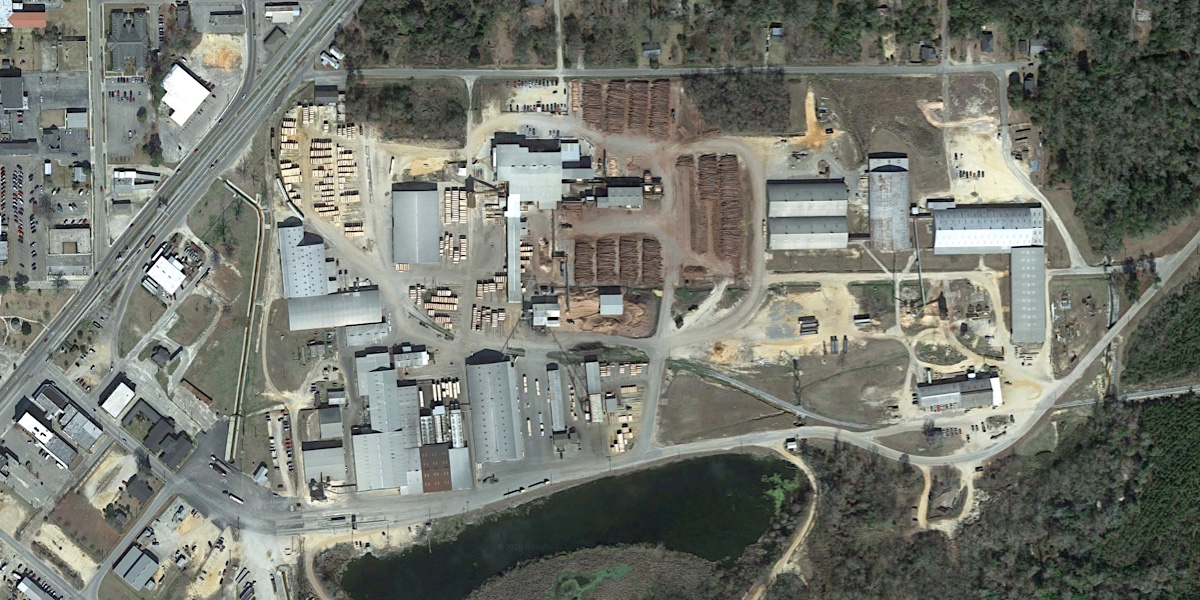
Miller Forest Products facility 1 / Google Maps
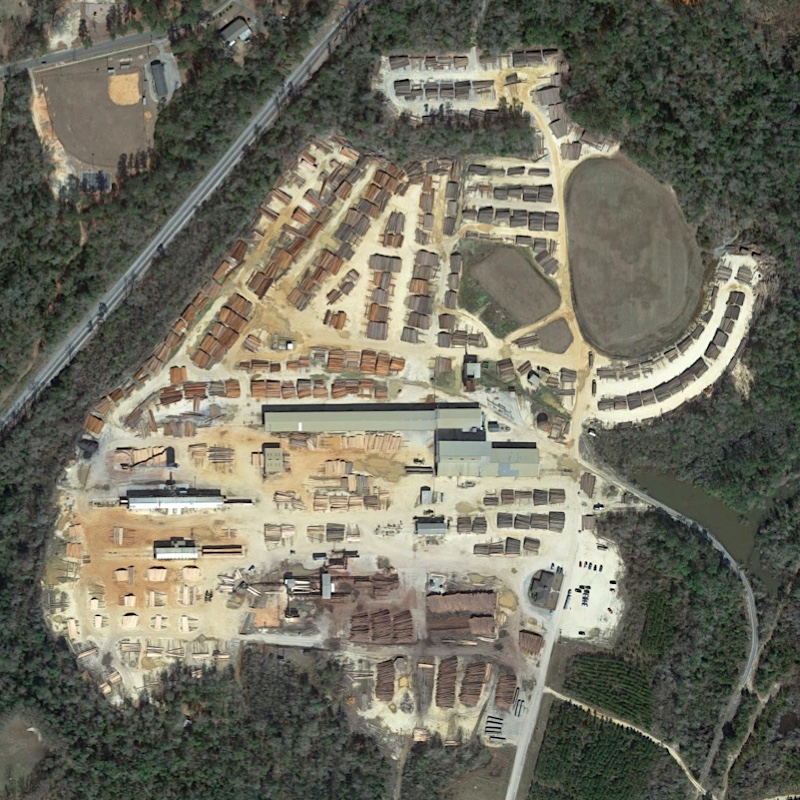
Miller Forest Products facility 2 / Google Maps
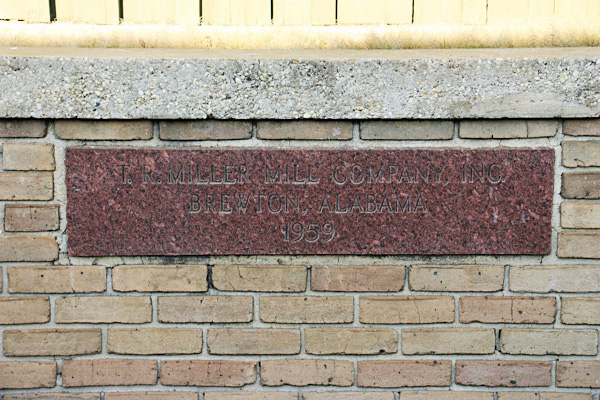
Brewton, Al / Nov 2018 / RWH

Brewton, Al / Nov 2018 / RWH

Brewton, Al / Nov 2018 / RWH
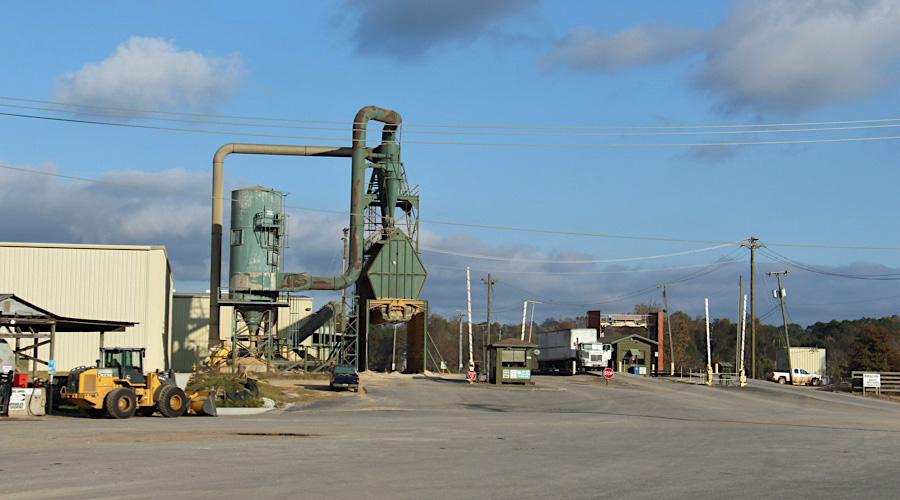
Brewton, Al / Nov 2018 / RWH
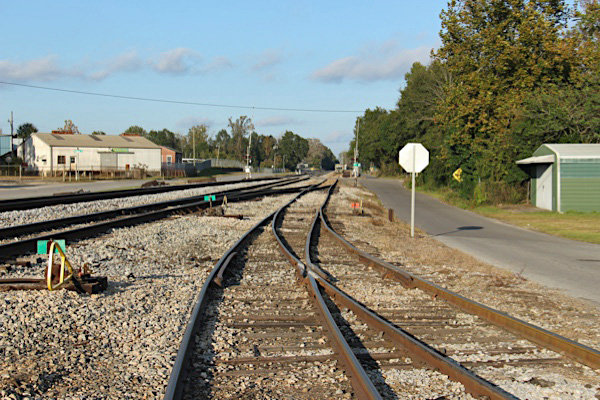
Brewton, Al / Nov 2018 / RWH
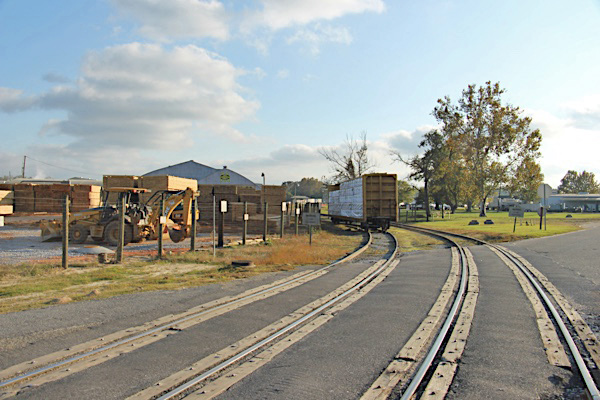
Brewton, Al / Nov 2018 / RWH
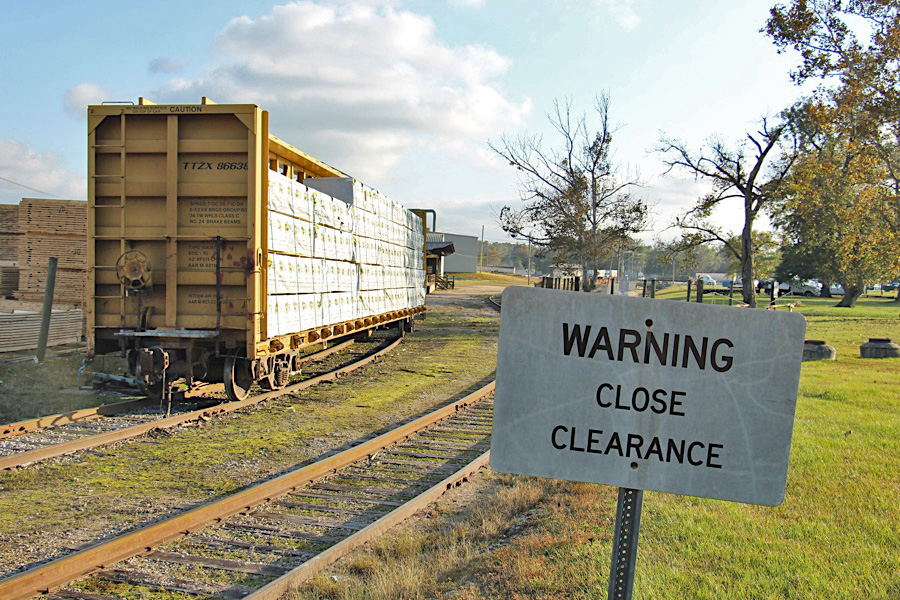
Brewton, Al / Nov 2018 / RWH
 Center Beam #866387
Center Beam #866387
Trailer Train #866387, pictured here, is typical of the loaded rolling stock prepared and shipped from the Miller facility. Product is wrapped in Miller wrapping, loaded and balanced on the equipment, and then the car is spotted near the CSX Transportation main for pickup by the next local job.
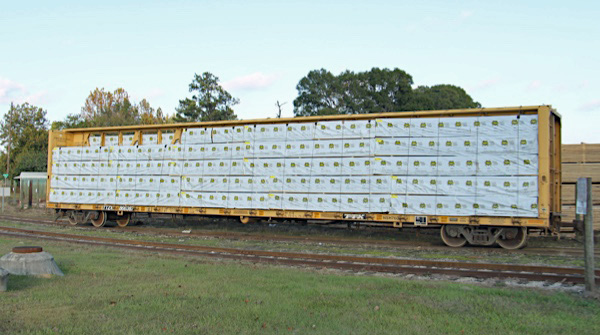
Trailer Train Company #866387
center beam lumber rack / Brewton, Al / Nov 2018 / RWH
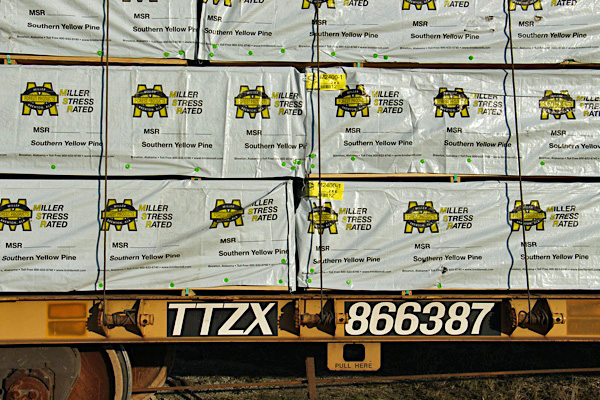
RWH

Brewton, Al / Nov 2018 / RWH

RWH
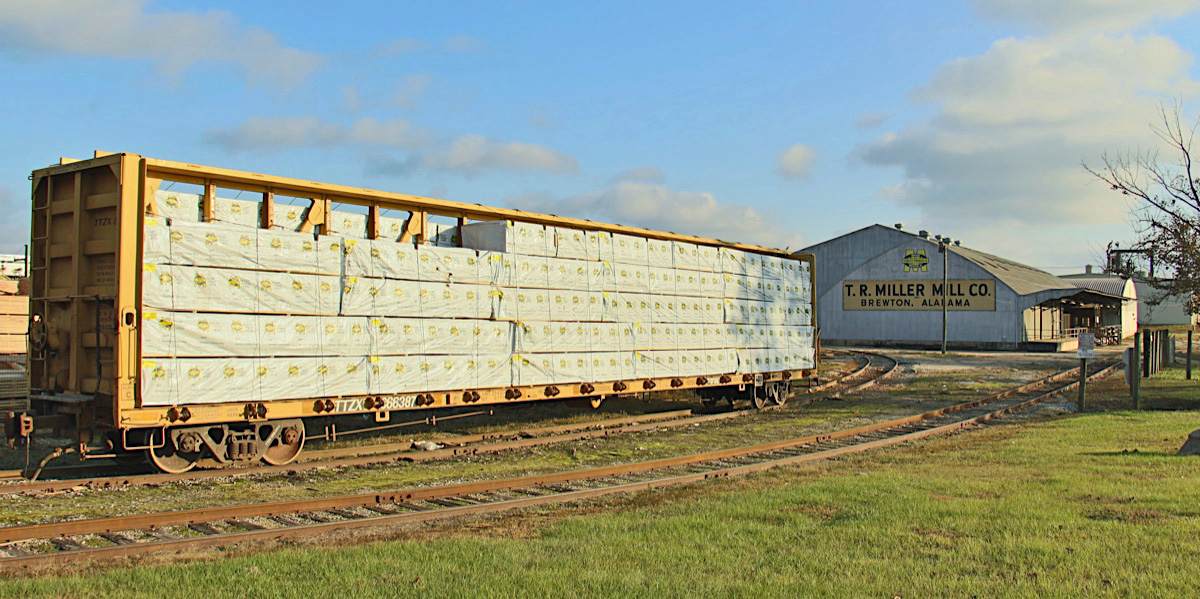
Brewton, Al / Nov 2018 / RWH
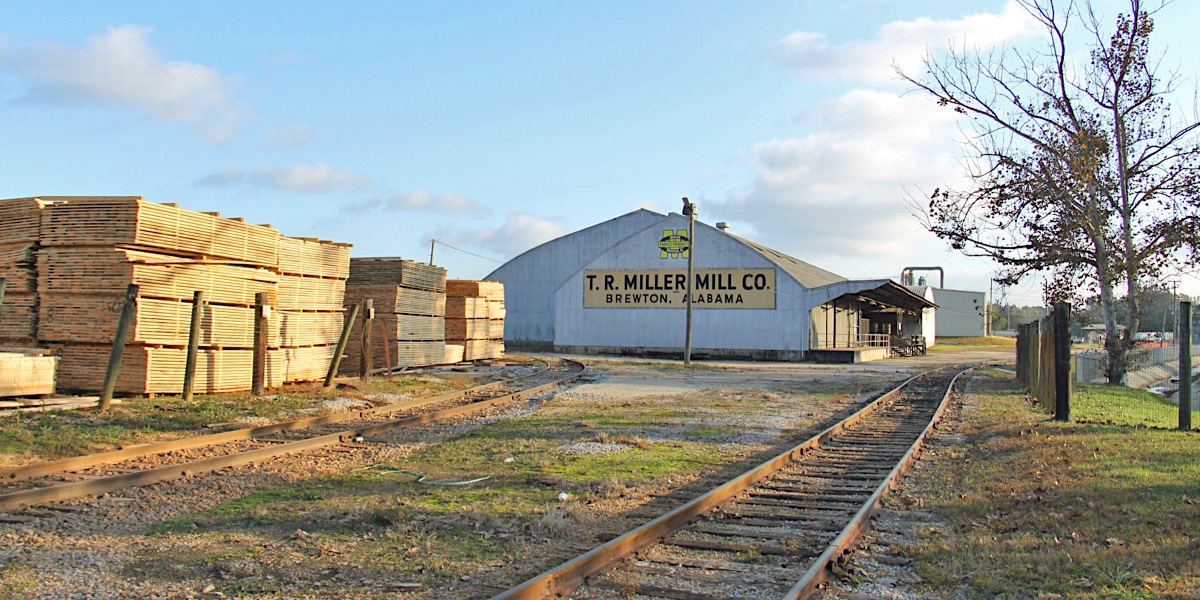
Brewton, Al / Nov 2018 / RWH
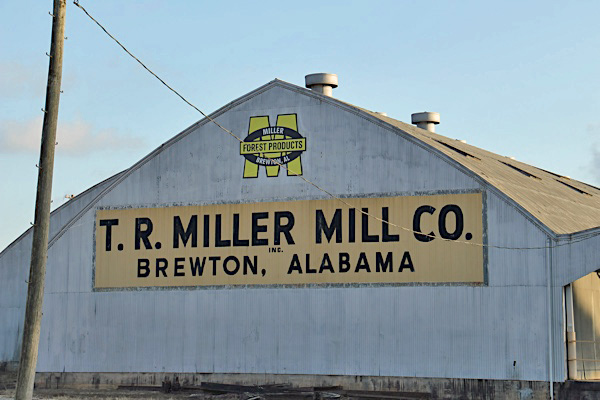
Brewton, Al / Nov 2018 / RWH


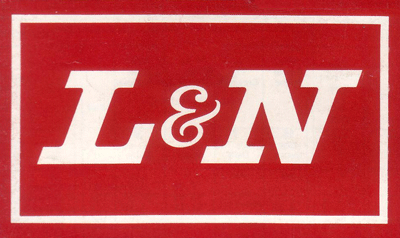 The T. R. Miller story is still very much a railroad story. The firm long depended on its own railroad, built in 1904, to bring logs from the forests into Brewton. While the logging railroad was discontinued in 1940 and replaced by a truck-tractor operation, T. R. Miller's own diesel switcher continues to shuttle back and forth over some five or six miles of track that connect the various Miller plants. Last year, over 1300 carloads of timber products moved out of T. R. Miller for markets over much of the nation, while some 950 cars of unfinished products, principally untreated poles and creosote oils, were switched into the plant.
The T. R. Miller story is still very much a railroad story. The firm long depended on its own railroad, built in 1904, to bring logs from the forests into Brewton. While the logging railroad was discontinued in 1940 and replaced by a truck-tractor operation, T. R. Miller's own diesel switcher continues to shuttle back and forth over some five or six miles of track that connect the various Miller plants. Last year, over 1300 carloads of timber products moved out of T. R. Miller for markets over much of the nation, while some 950 cars of unfinished products, principally untreated poles and creosote oils, were switched into the plant.
Much of Miller's lumber is prepackaged for fast loading and unloading. On a visit to the plant, this writer watched a fork-lift neatly stack palletized lumber aboard one of the L & N's big 100-ton bulkhead flat cars. Irene Murray, T. R. Miller's traffic manager, has long advocated use of bulkhead flatcars, and so that the L&N could better serve her and other lumber shippers, the railroad has acquired a fleet of over 200 chain-binder-equipped bulkhead flats just since 1962. More new flats are on the way this year.
Charles B. Castner - "The T. R. Miller Story" - L&N Magazine - May 1965
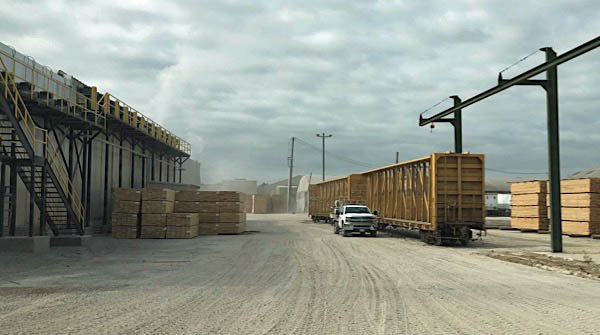
Brewton, Al / May 2019 / RWH
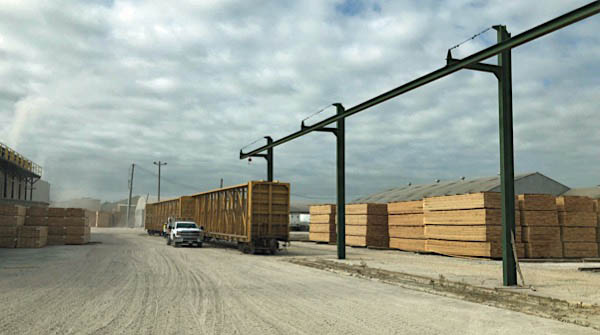
Brewton, Al / May 2019 / RWH
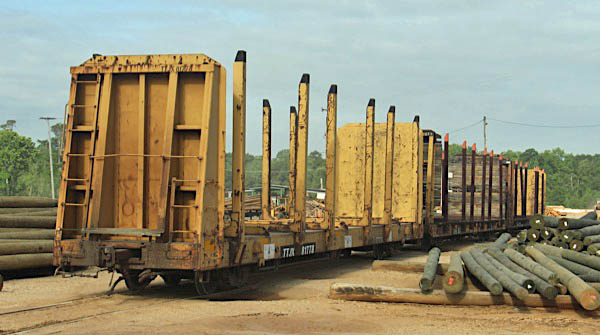
Brewton, Al / May 2019 / RWH
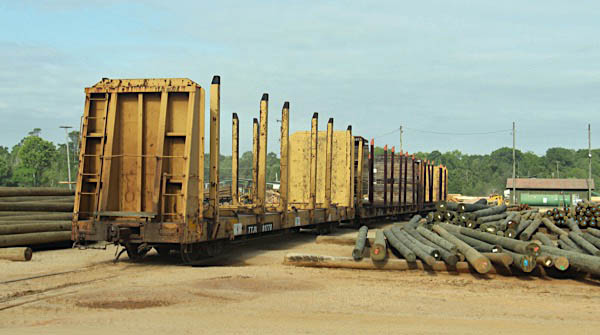
Brewton, Al / May 2019 / RWH

Brewton, Al / May 2019 / RWH

Brewton, Al / May 2019 / RWH

Brewton, Al / May 2019 / RWH

Brewton, Al / May 2019 / RWH

Brewton, Al / May 2019 / RWH
 Lagniappe
Lagniappe
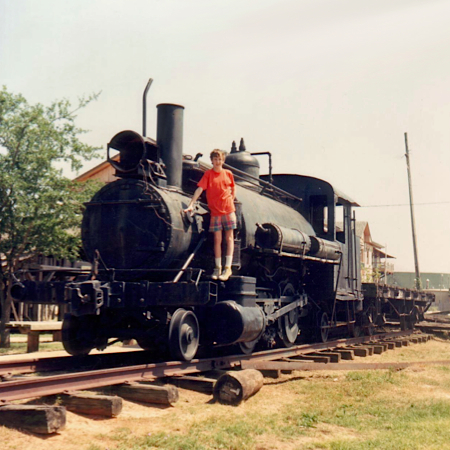
Pensacola, Fl / 1980s / JCH
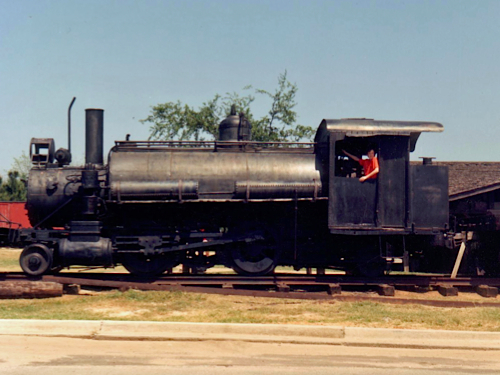
Pensacola, Fl / 1980s / JCH

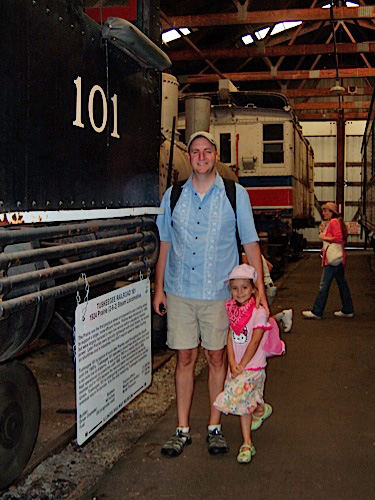 Pilgrimage 101
Pilgrimage 101
In the fall of 2009, my family traveled to Chicago to visit close friends. This being my first visit to Chicagoland by car, I insisted upon a day in the schedule to visit the impressive Illinois Railway Museum. For many years it has been goal of mine to see their fine collection, but in truth two Deep South pieces on the site drew me on a must-see pilgrimage: Columbus & Greenville #606 and T.R. Miller Mill Co. diminutive #101. The IRM is a massive museum, covering lots of ground, so it took me the better part of the morning to find the little engine. Turns out she's stored in two parts: Her boiler and running gear are inside one of the covered buildings, while her tender resides outside in a long cut of rusting steam parts. All in all, I found the engine in rough shape, but not beyond rebuilding. At least her boiler is protected from the weather. The engine is lettered for the Tuskegee Railroad, the other Alabama shortline to own and operate her. Out in Union, Illinois, far northwest of the city, she's a long way from the humid grounds of her Southland home. Still, after spending so much time with dad's 120 negatives, and hearing his several stories of seeing her run and meeting her people, it was good to meet this little Baldwin face to face.


See also our complete Illinois Railway Museum scrapbook in Preservation
all photos above taken at Illinois Railway Museum / Union, Il / Sep 2009 / RWH
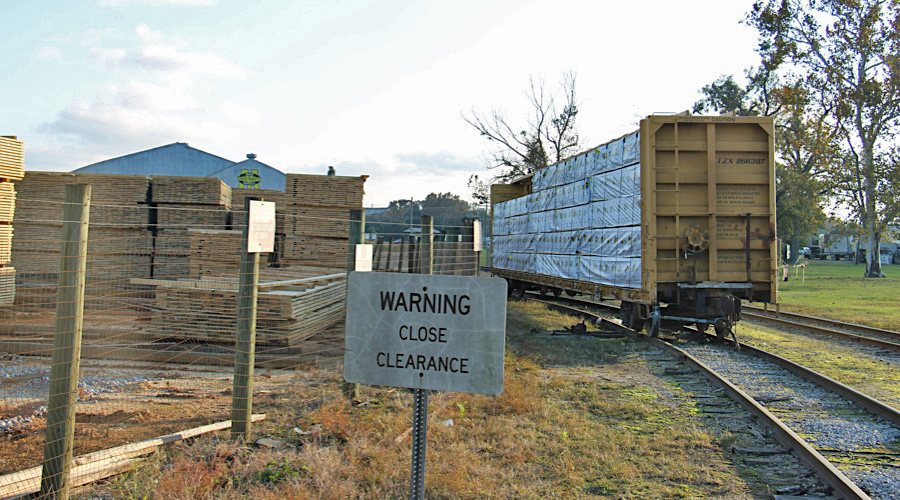
Another Close Call
Brewton, Al / Nov 2018 / RWH

 After so many years of working with my father's Miller images, and after so much wonderful correspondence between so many persons about Miller's steam engines and the men who worked them, I was long overdue for a visit to Brewton to see the current operations. Thanksgiving travels to Louisiana gave me the chance to ply southern Alabama and to some photos of the current facility. Although I was 60 years too late to see Mr. Rucker put on a show with kettle #101, I enjoyed putting my father's images of those operations in context. Plus, a southbound CSX coal drag rumbled through Brewton just as I was packing up to head to Mobile. Bonus.
After so many years of working with my father's Miller images, and after so much wonderful correspondence between so many persons about Miller's steam engines and the men who worked them, I was long overdue for a visit to Brewton to see the current operations. Thanksgiving travels to Louisiana gave me the chance to ply southern Alabama and to some photos of the current facility. Although I was 60 years too late to see Mr. Rucker put on a show with kettle #101, I enjoyed putting my father's images of those operations in context. Plus, a southbound CSX coal drag rumbled through Brewton just as I was packing up to head to Mobile. Bonus.
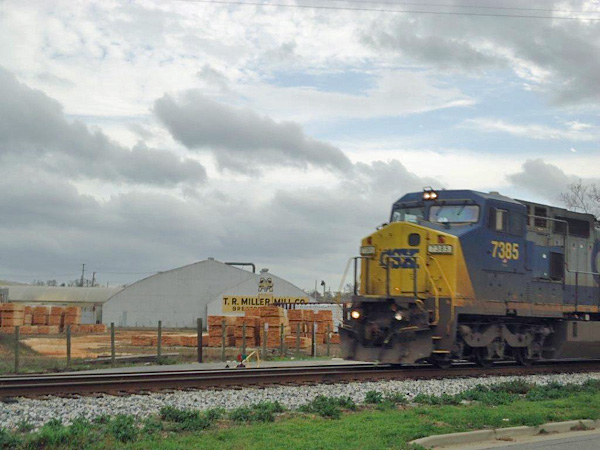
Brewton, Al / 2012 / Charles Johns

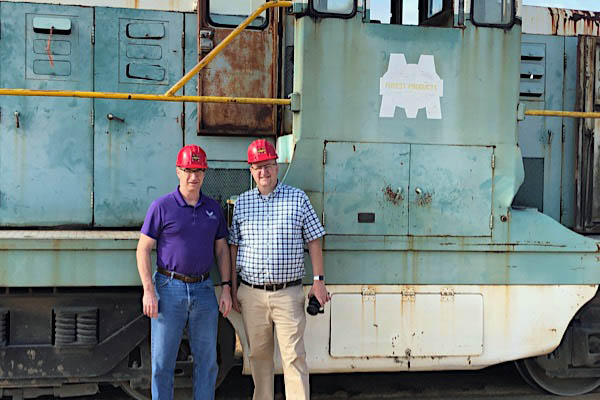 Thanks to contacts and introductions made by local Brewton attorney and railfan friend Chuck Johns, Jr., HawkinsRails made an official visit to the T. R. Miller facility so my brother Jack and I could offer framed photographs our father's 1961 pictures of Baldwin #101 and her caretakers Mr. Robert Rucker and Mr. James Jackson. Pictured below, to the right of the company portrait of Mr. Miller himself, are (left) Mr. Daniel Gravely, Operations Manager of the mill and (right) Mr. Thomas E. McMillan, Jr., direct descendent of Miller, member of the Board of Directors, and author of a self-published book on the logging operations and equipment associated with predecessor Cedar Creek Mill Company and successor T. R. Miller Mill. The mill's management was in every way hospitable to our visit, showing us their beautiful office facility, introducing us to various employees (including those in charge of the rail operations), and giving us a driving tour of the entire mill facility. Ours hosts even indulged this diesel roster shot addict as I crawled all over their aging but still-going-strong 65 tonner with EMD controls. The modern Miller Mill is a smart and dedicated lumber operation, full of Southern hospitality and proud of their history as a profitable and responsible timbering firm. It has been an absolute pleasure getting to know more of folks who keep Mr. Miller's original business vision alive.
Thanks to contacts and introductions made by local Brewton attorney and railfan friend Chuck Johns, Jr., HawkinsRails made an official visit to the T. R. Miller facility so my brother Jack and I could offer framed photographs our father's 1961 pictures of Baldwin #101 and her caretakers Mr. Robert Rucker and Mr. James Jackson. Pictured below, to the right of the company portrait of Mr. Miller himself, are (left) Mr. Daniel Gravely, Operations Manager of the mill and (right) Mr. Thomas E. McMillan, Jr., direct descendent of Miller, member of the Board of Directors, and author of a self-published book on the logging operations and equipment associated with predecessor Cedar Creek Mill Company and successor T. R. Miller Mill. The mill's management was in every way hospitable to our visit, showing us their beautiful office facility, introducing us to various employees (including those in charge of the rail operations), and giving us a driving tour of the entire mill facility. Ours hosts even indulged this diesel roster shot addict as I crawled all over their aging but still-going-strong 65 tonner with EMD controls. The modern Miller Mill is a smart and dedicated lumber operation, full of Southern hospitality and proud of their history as a profitable and responsible timbering firm. It has been an absolute pleasure getting to know more of folks who keep Mr. Miller's original business vision alive.

Brewton, Al / May 2019 / RWH

Brewton, Al / May 2019 / RWH
Links / Sources
- T. R. Miller Mill company page
- Thomas Lawson, Jr., Logging Railroads of Alabama (Cabbage Stack Publishing, 1997)
- Thomas E. McMillan, Jr., Logging the Mill: Cedar Creek and T. R. Miller Mill Companies (self-published)
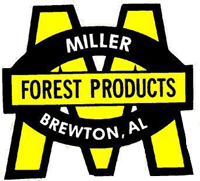
 All time T. R. Miller Mill Company steam locomotive roster
All time T. R. Miller Mill Company steam locomotive roster
